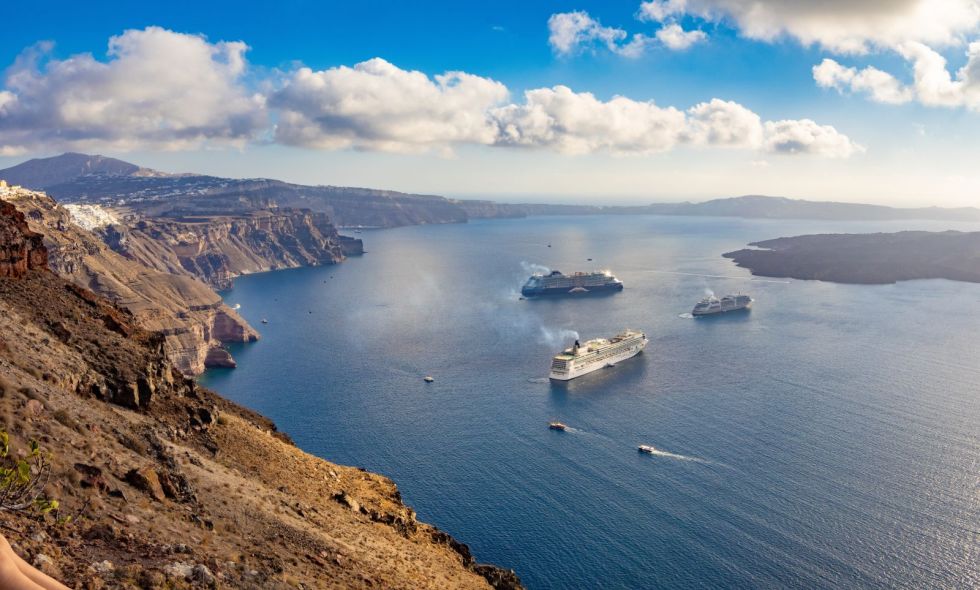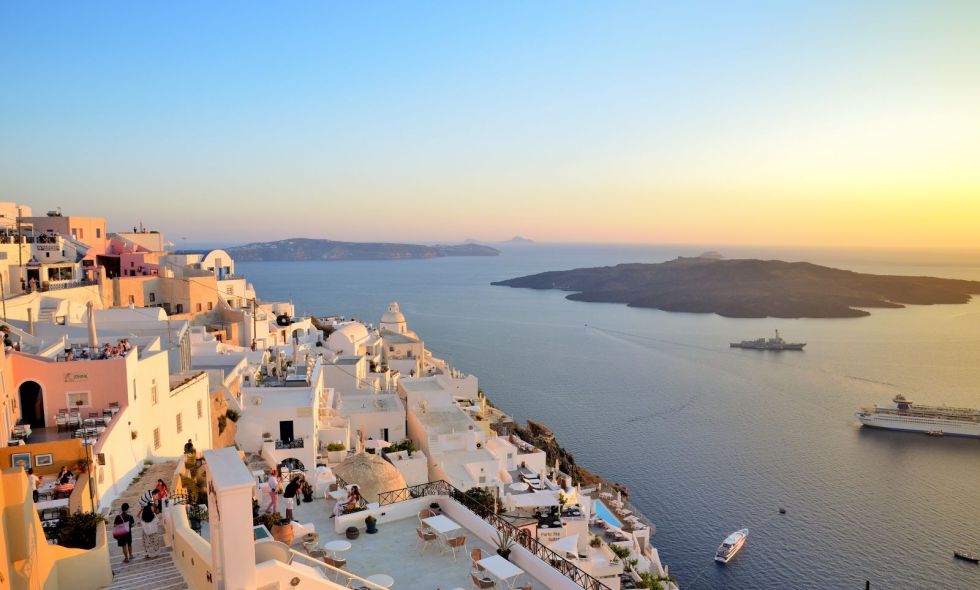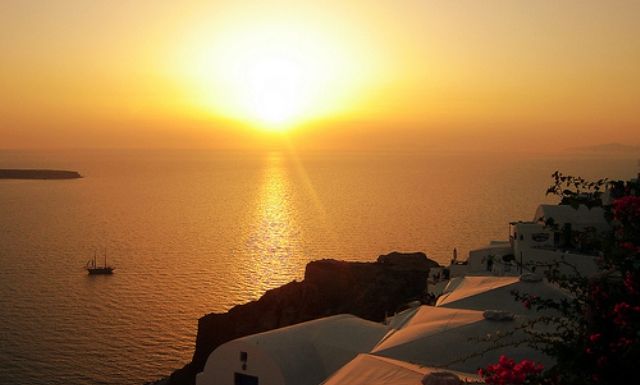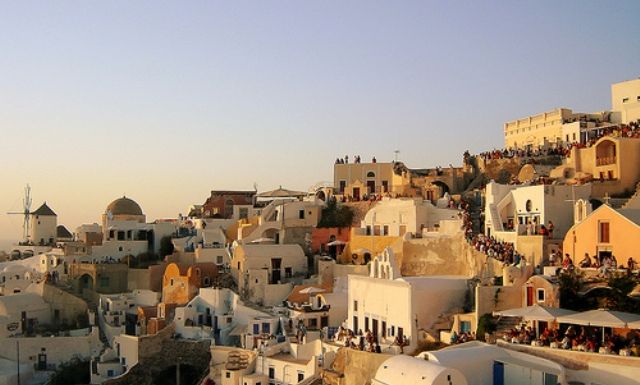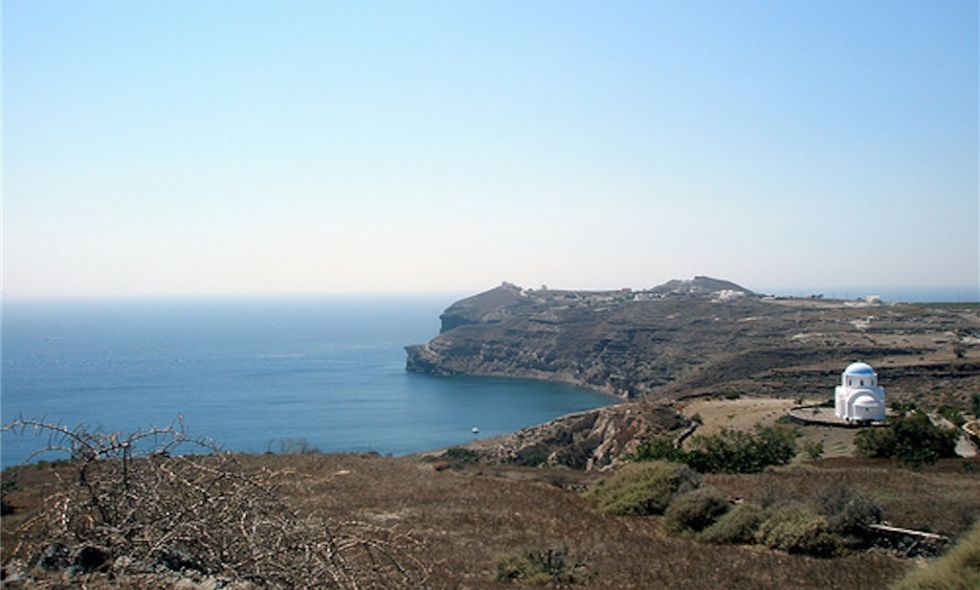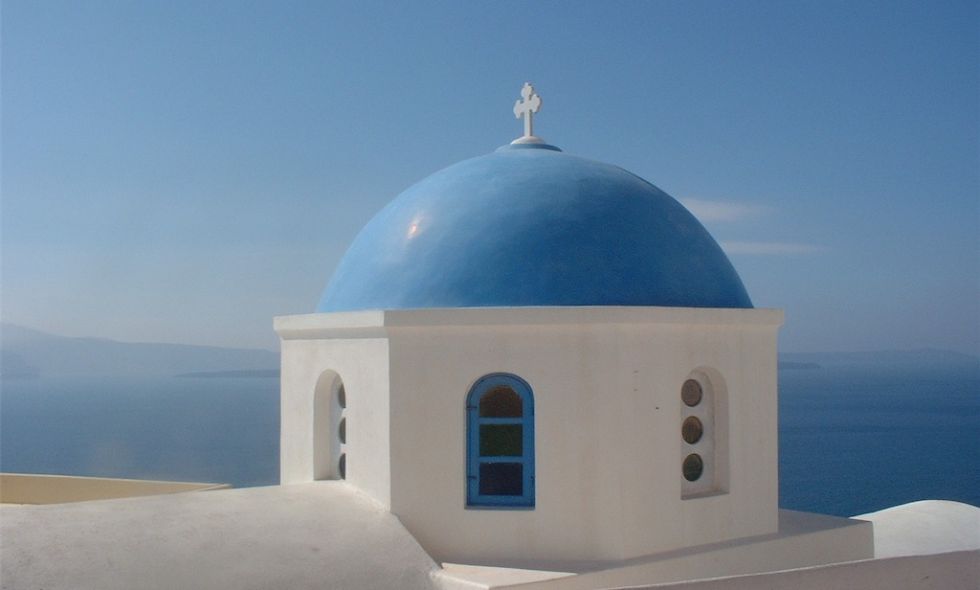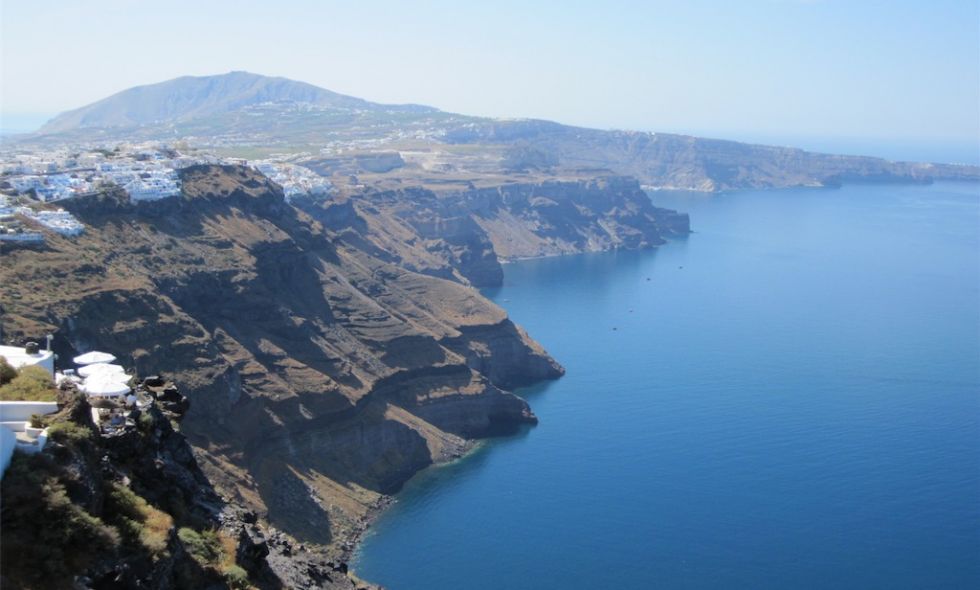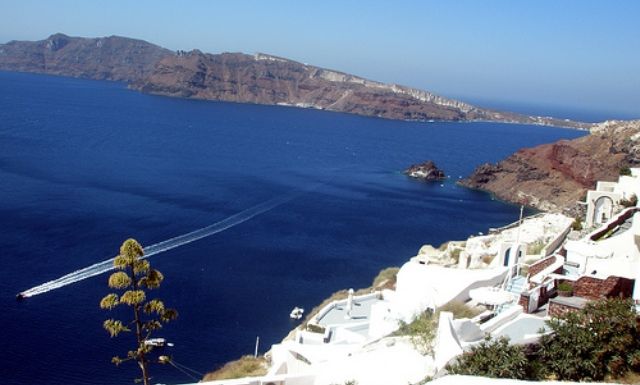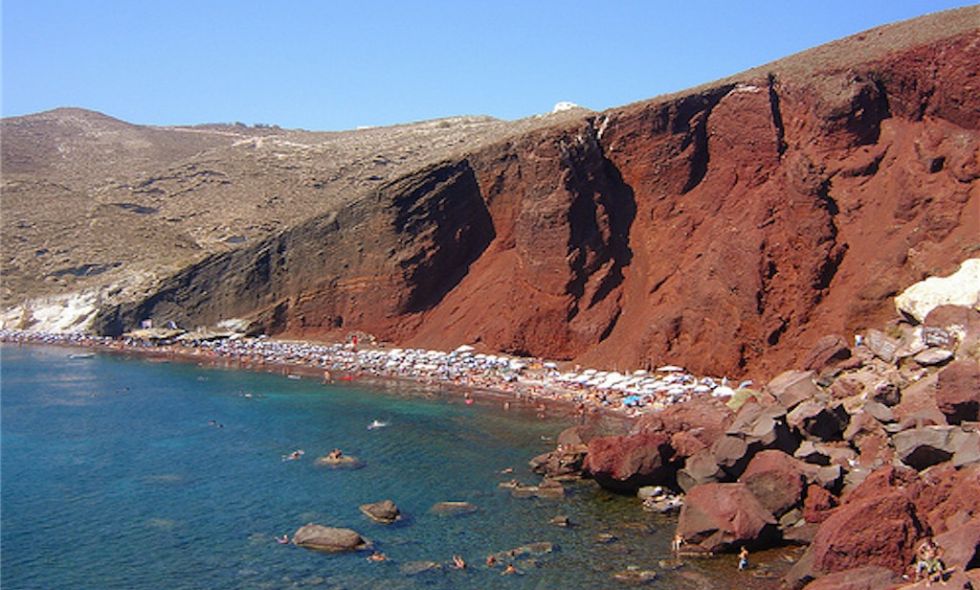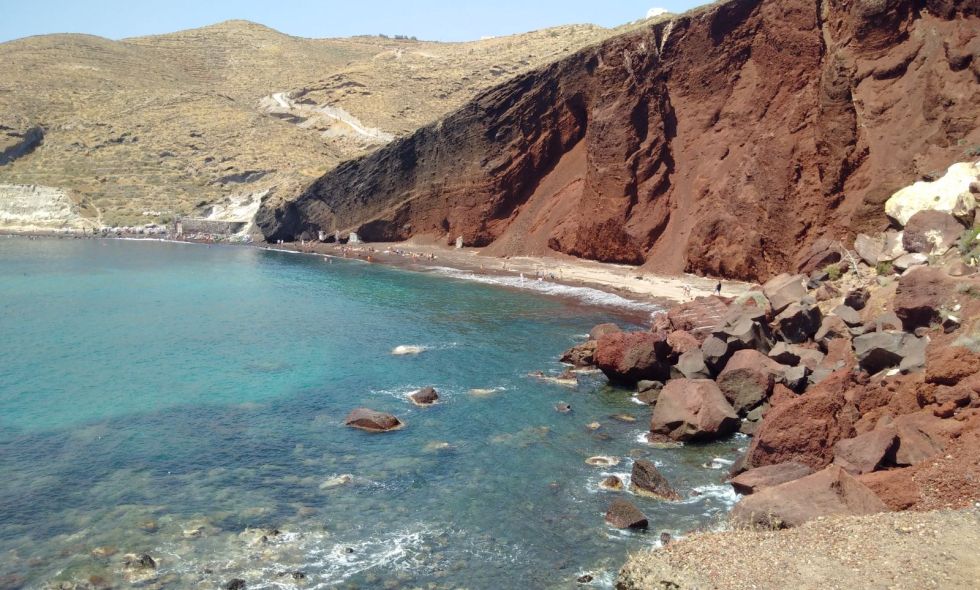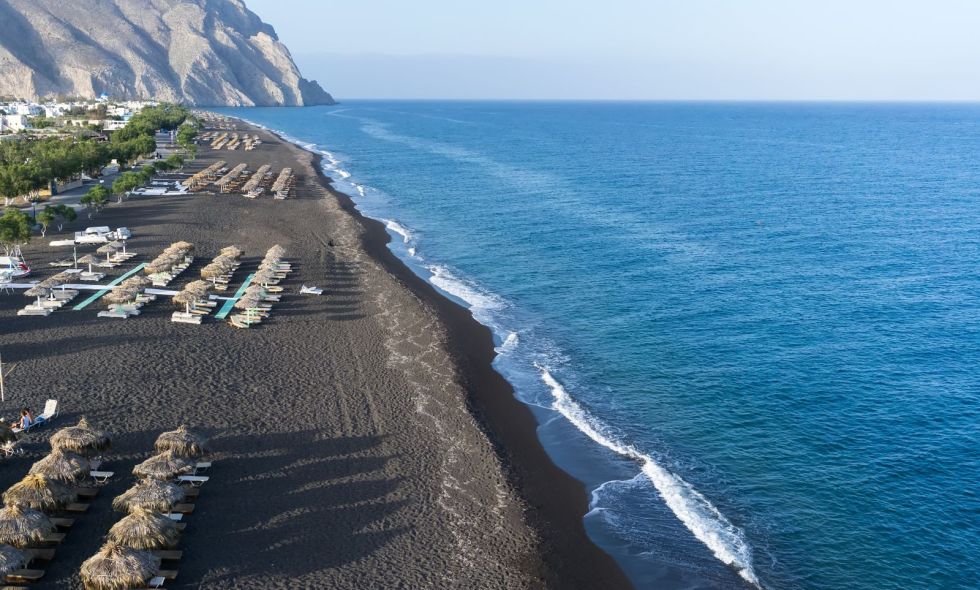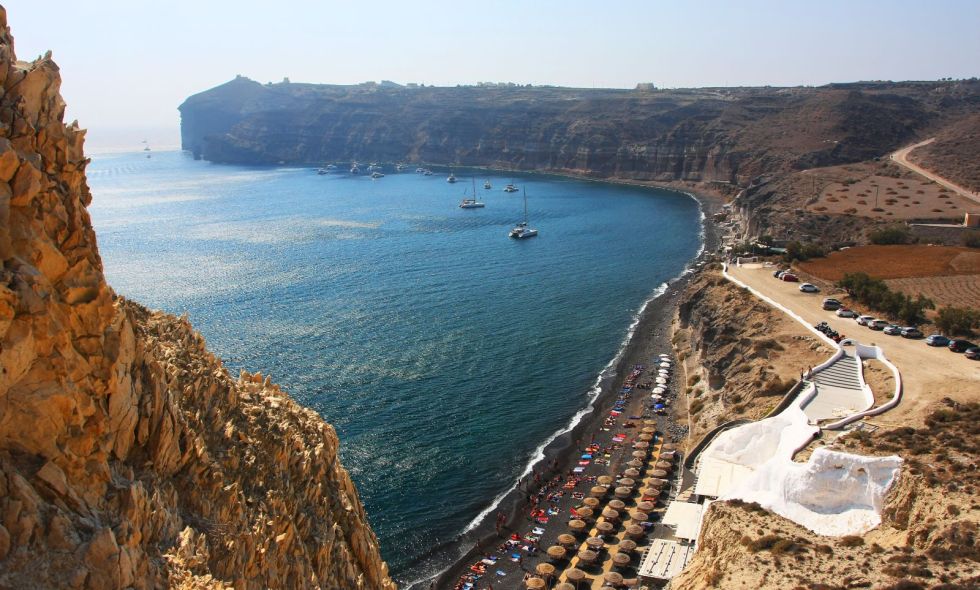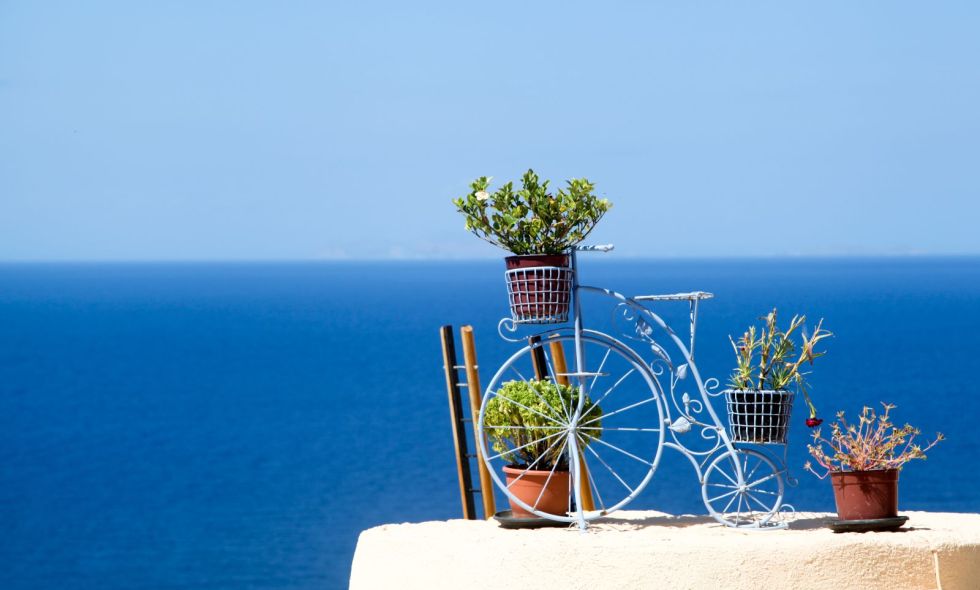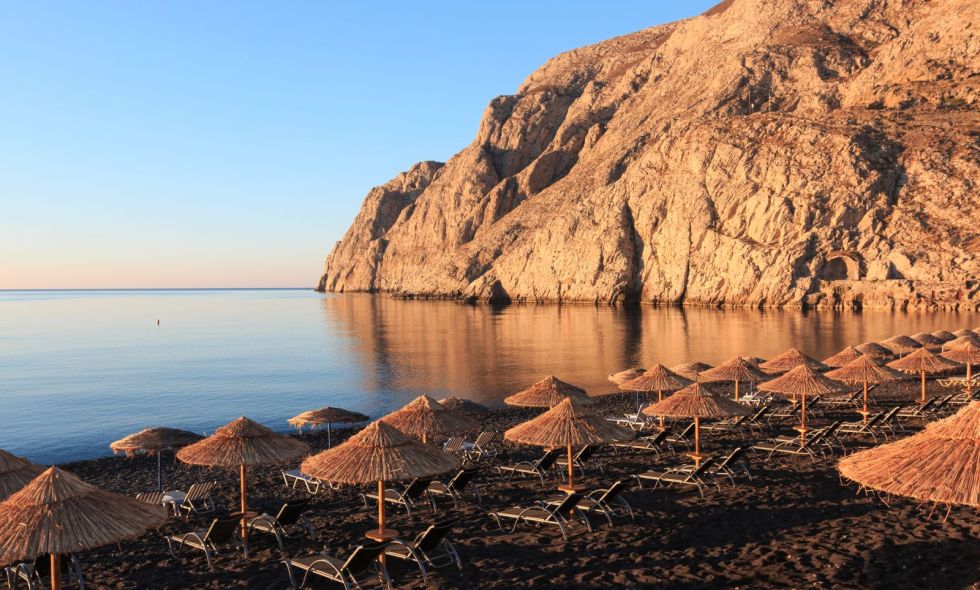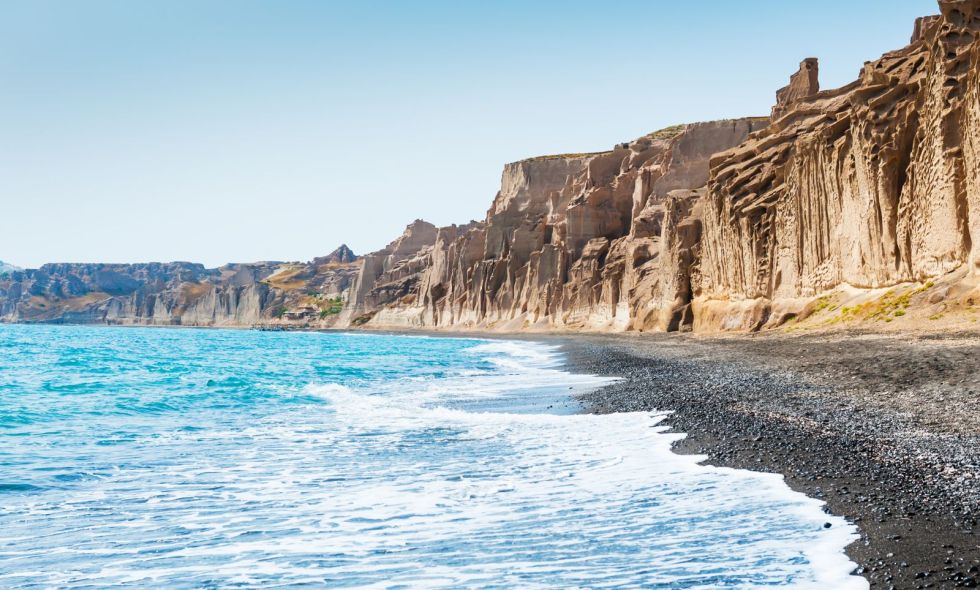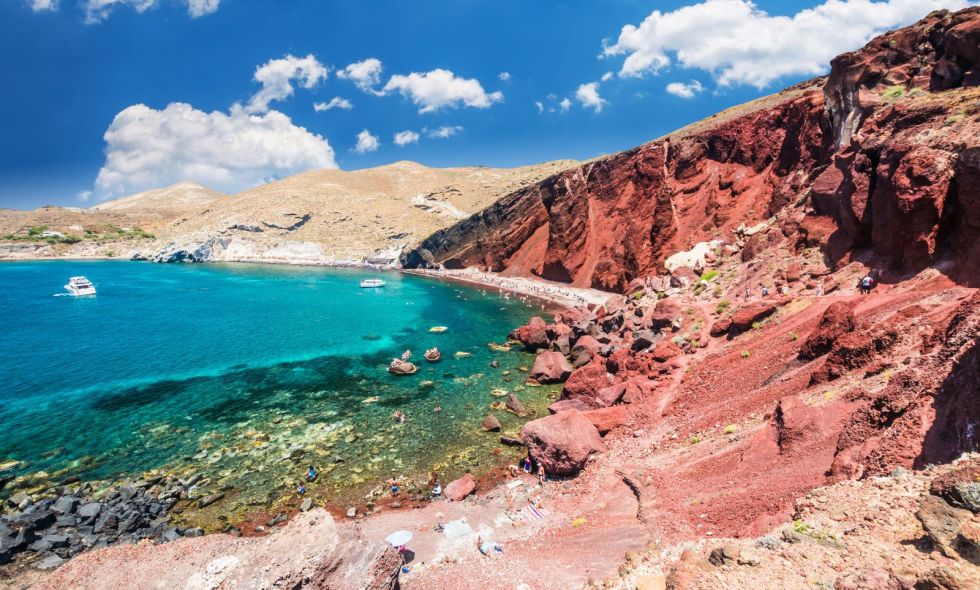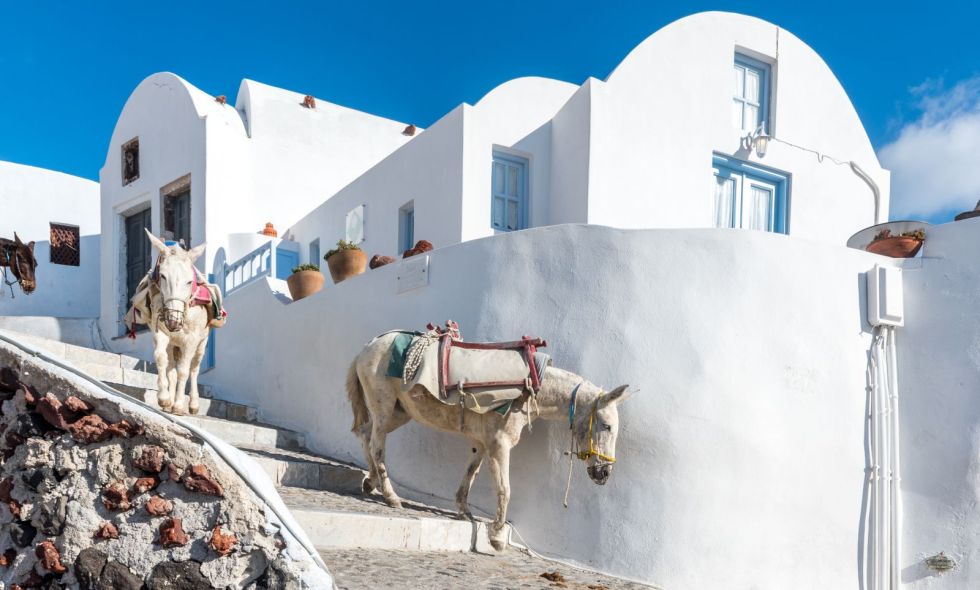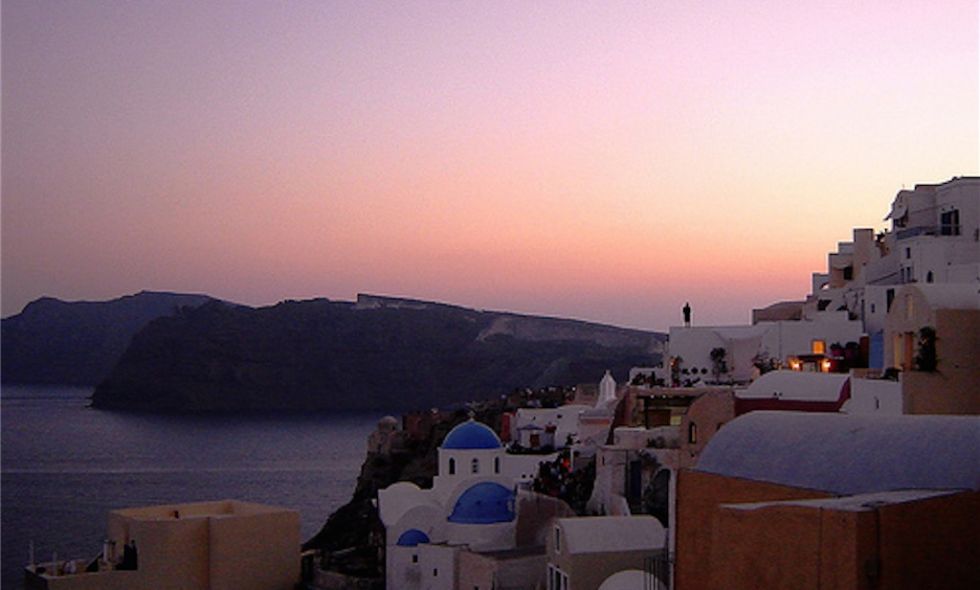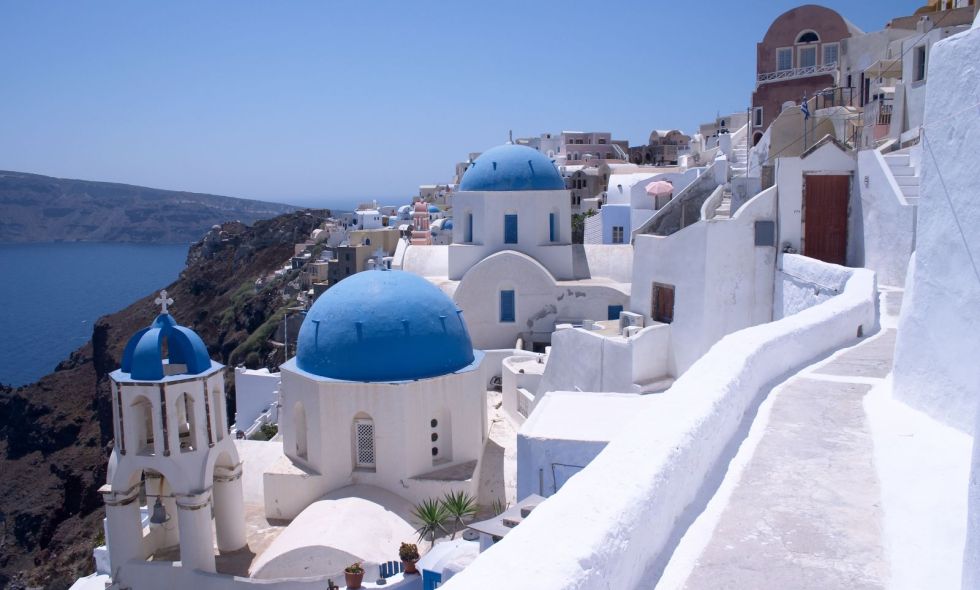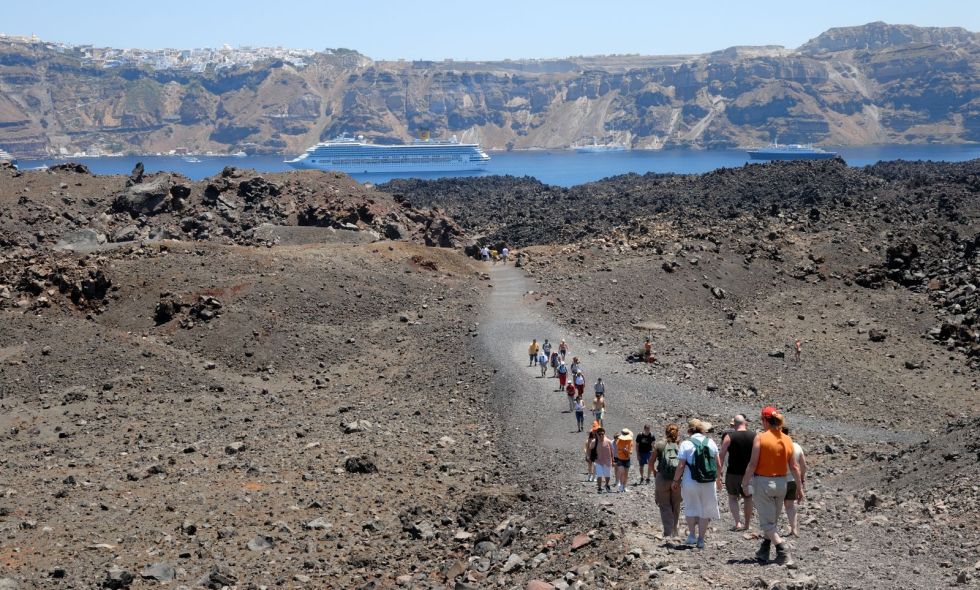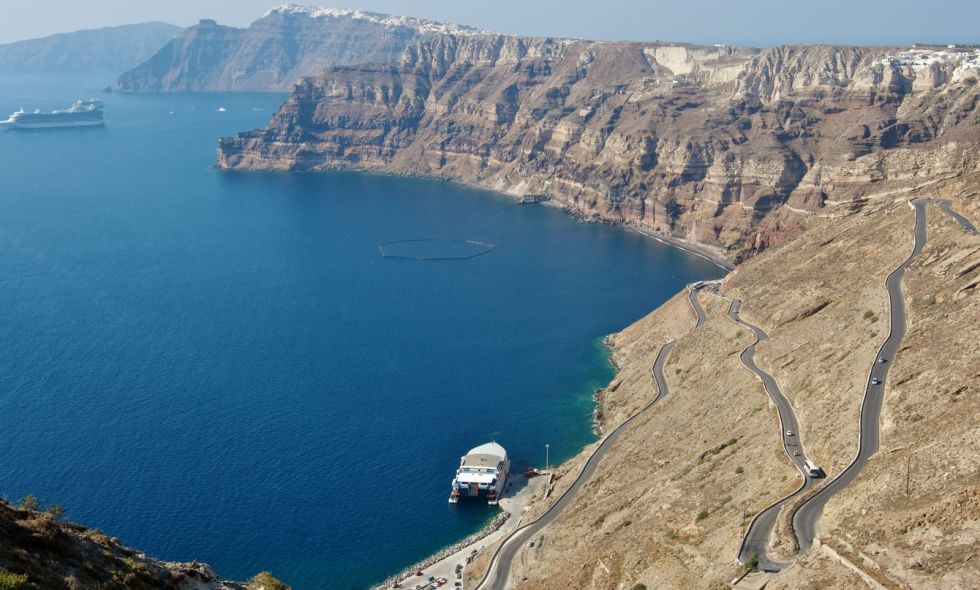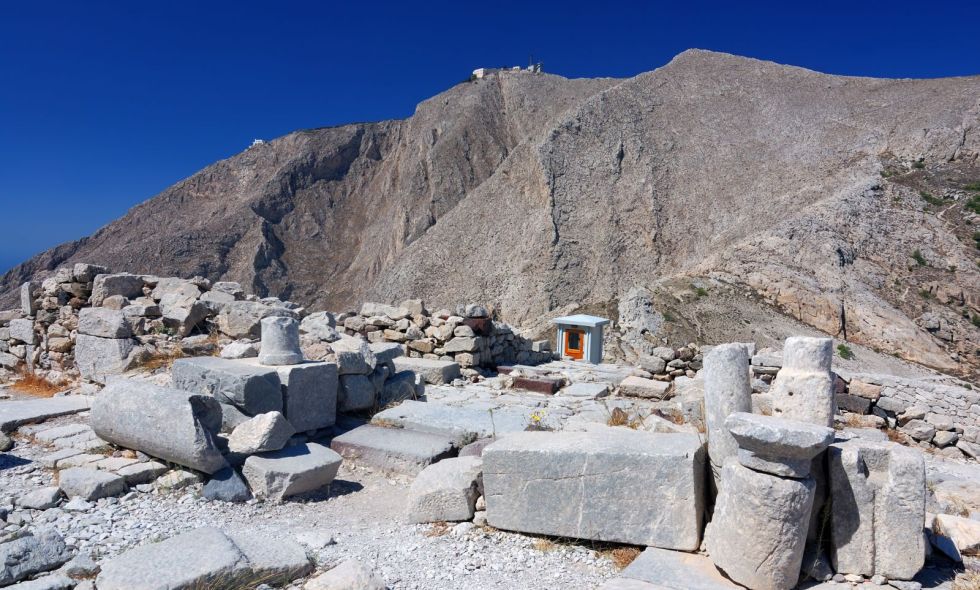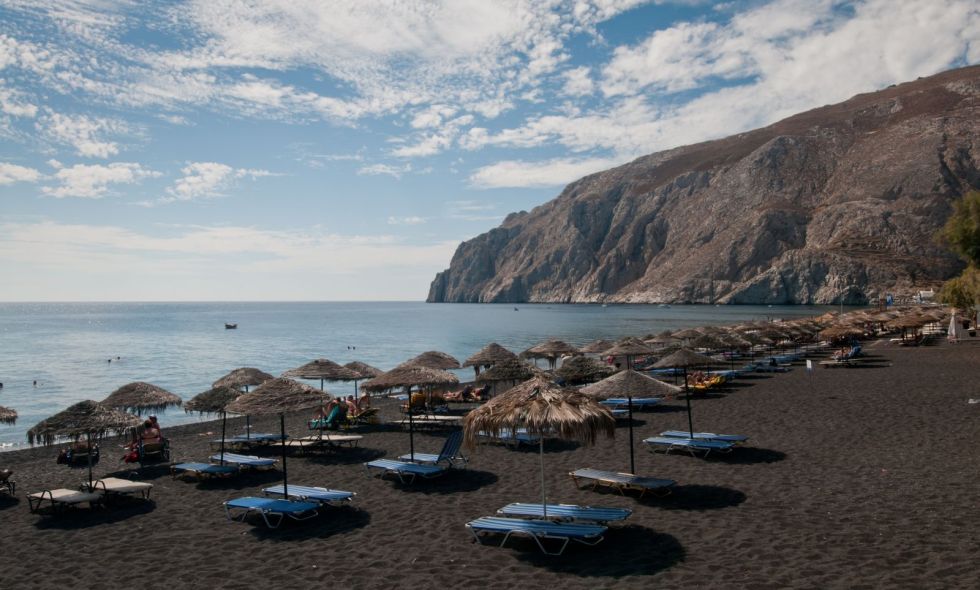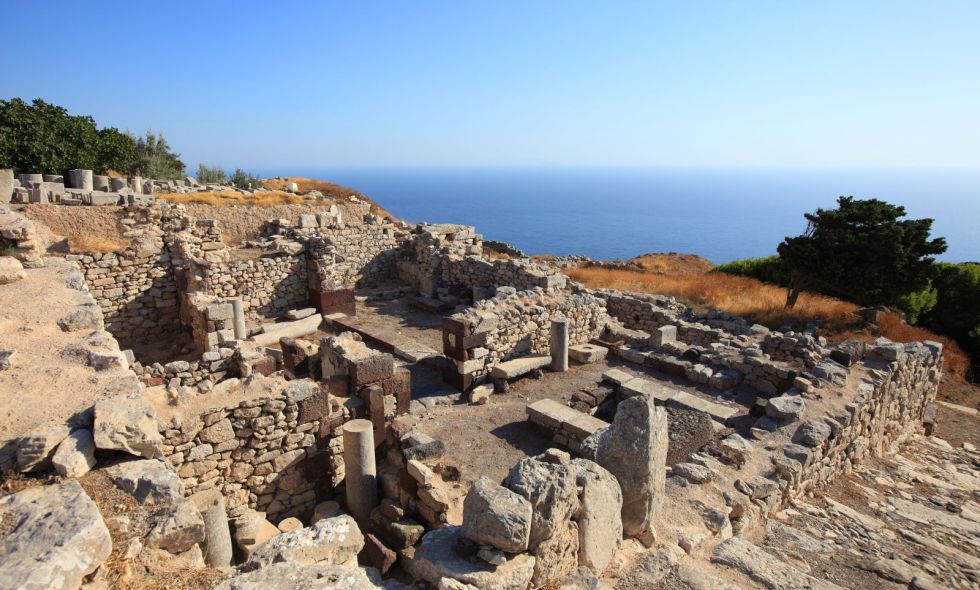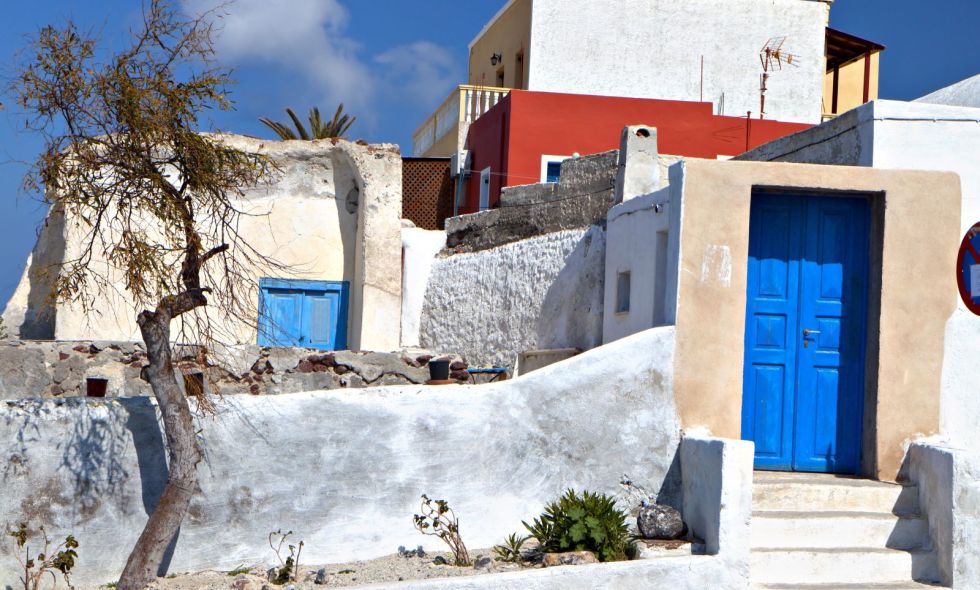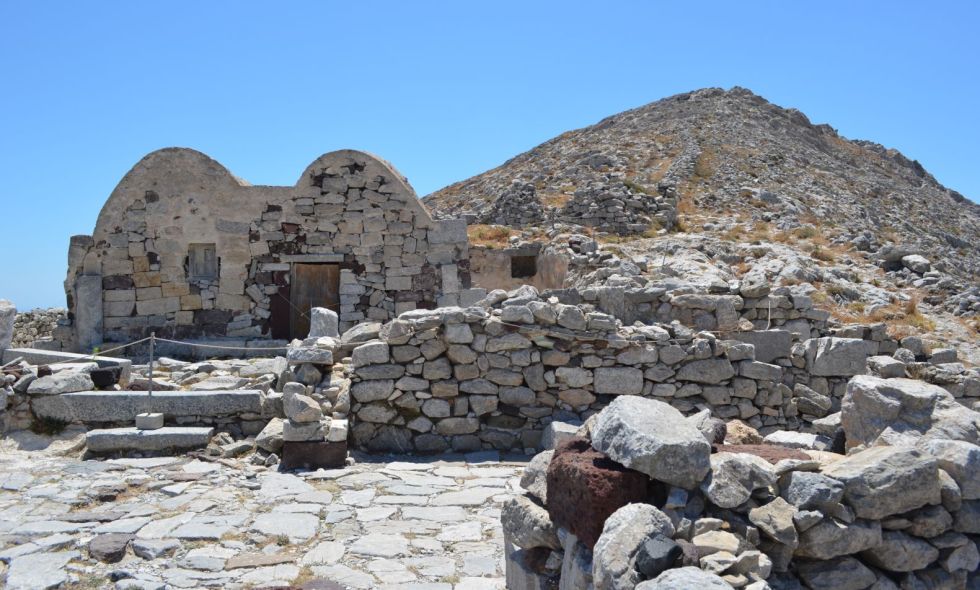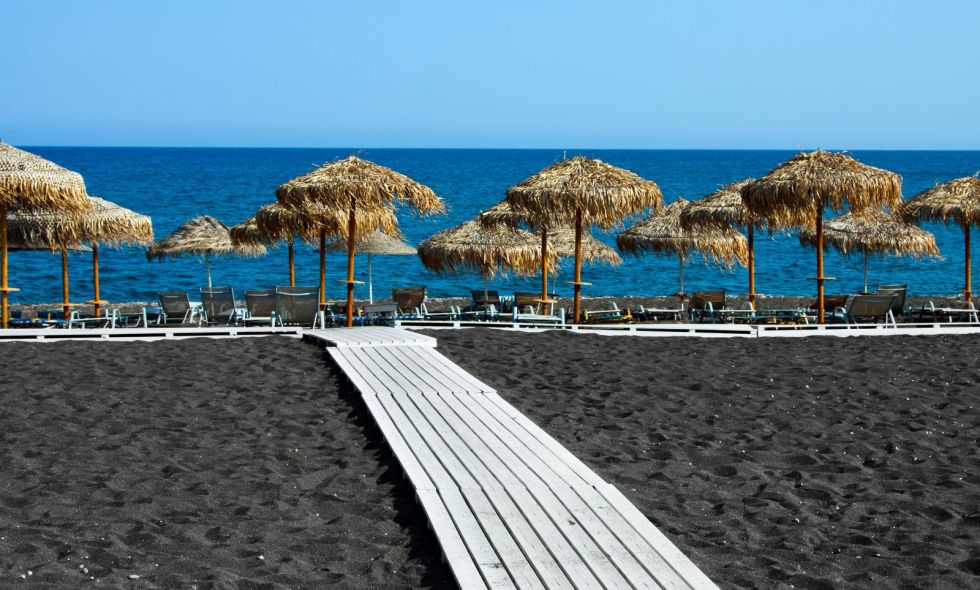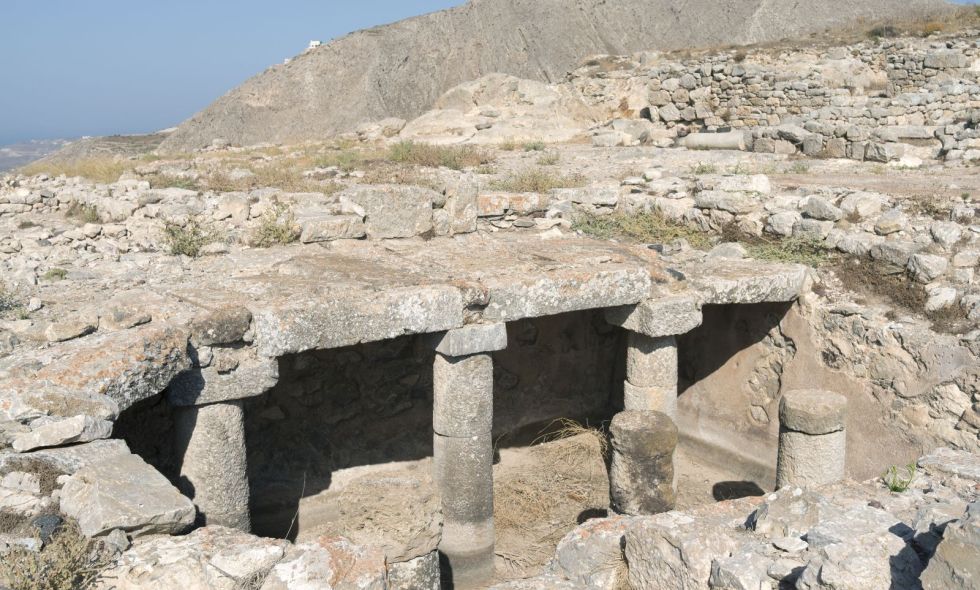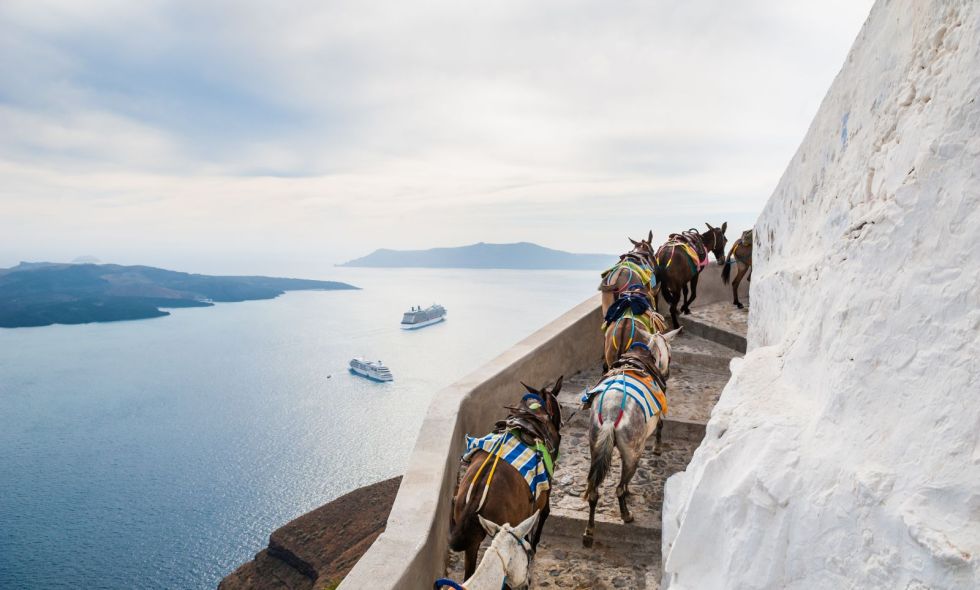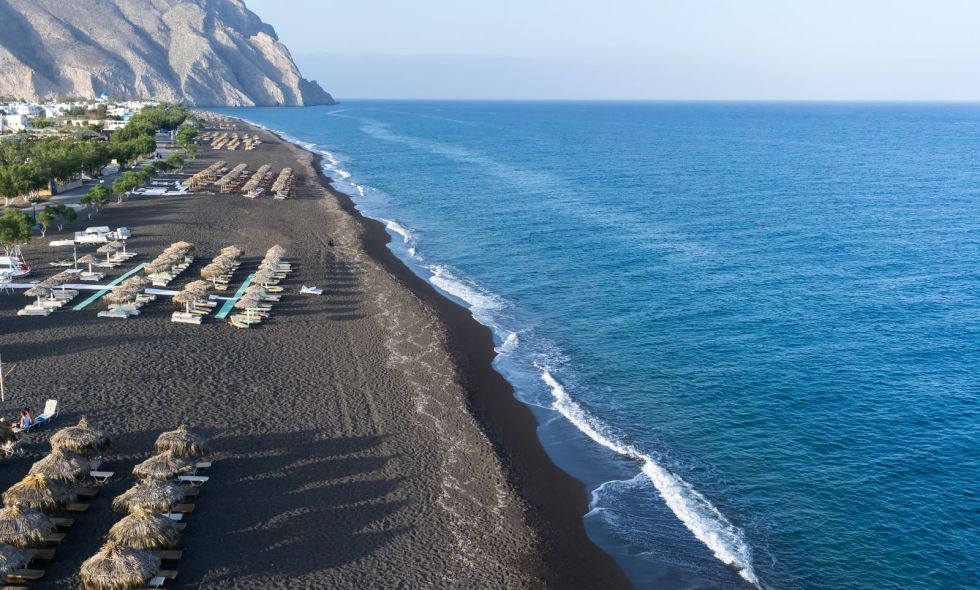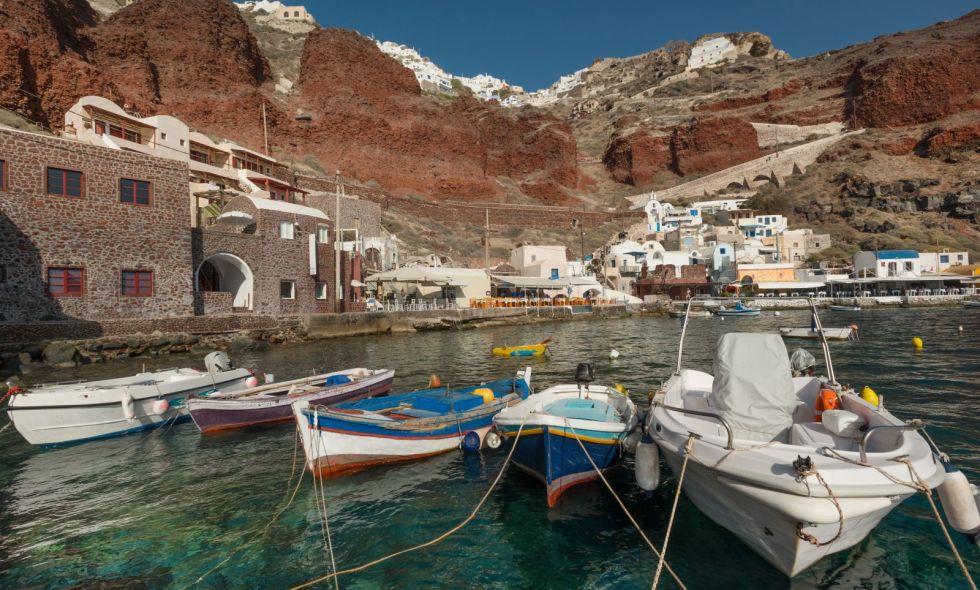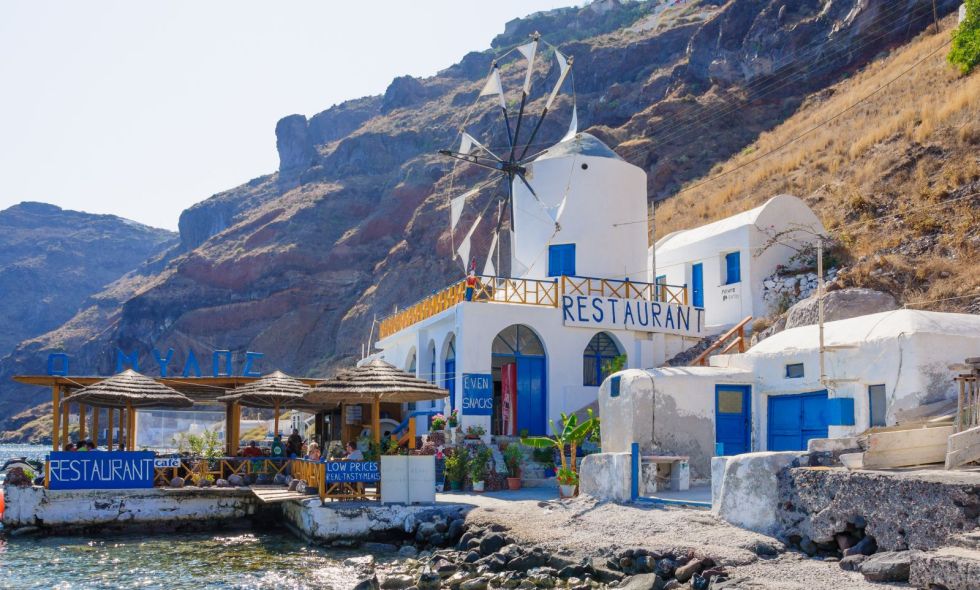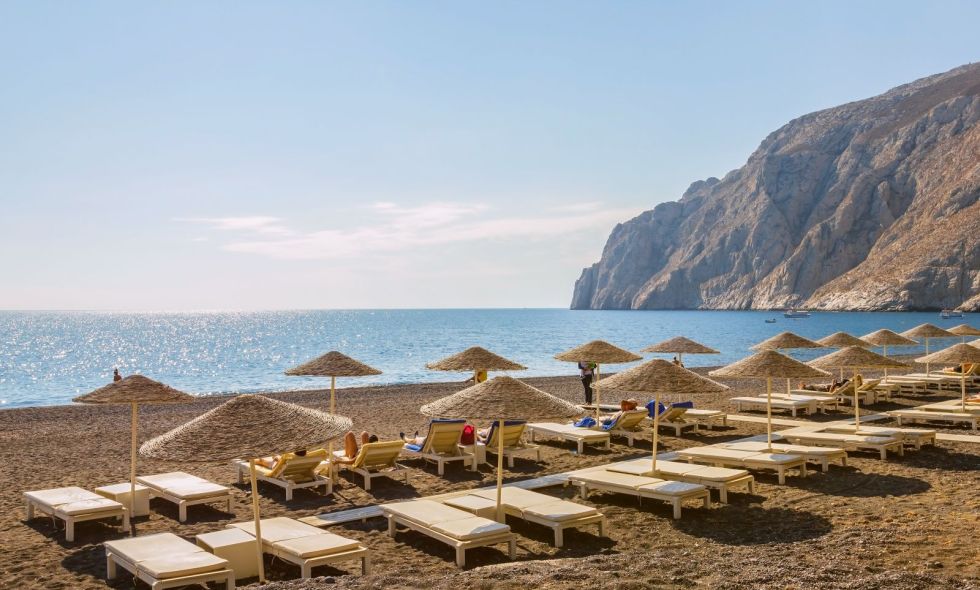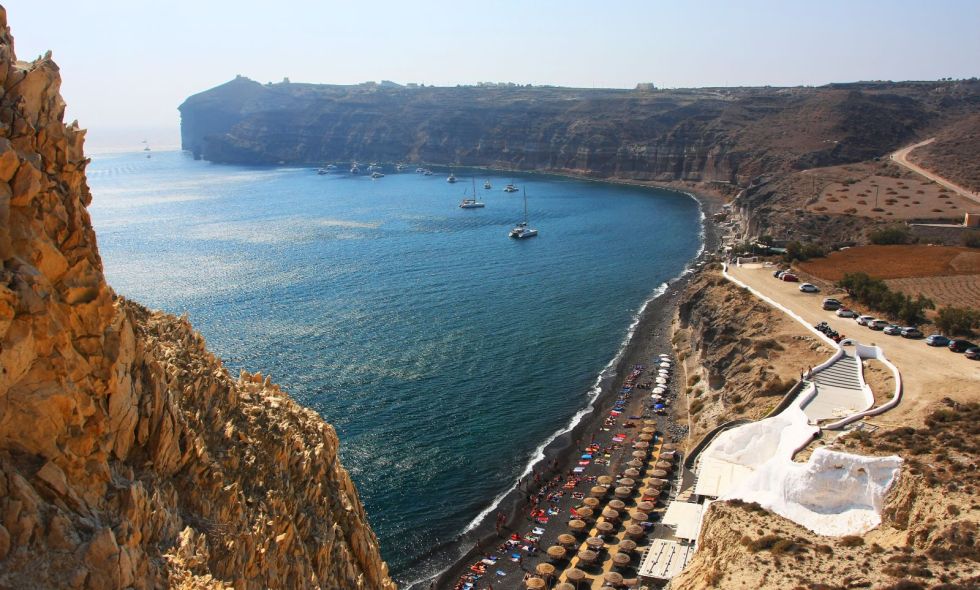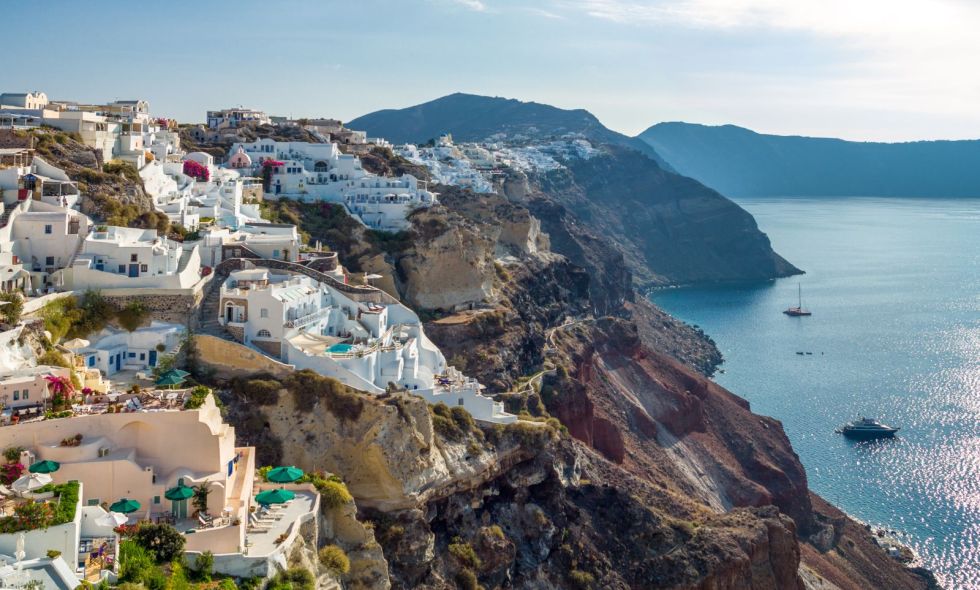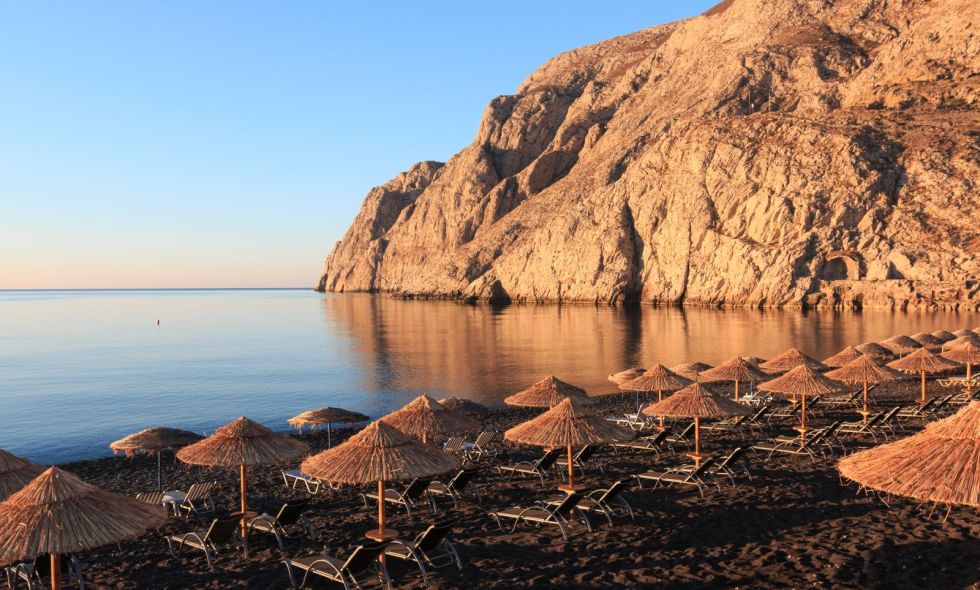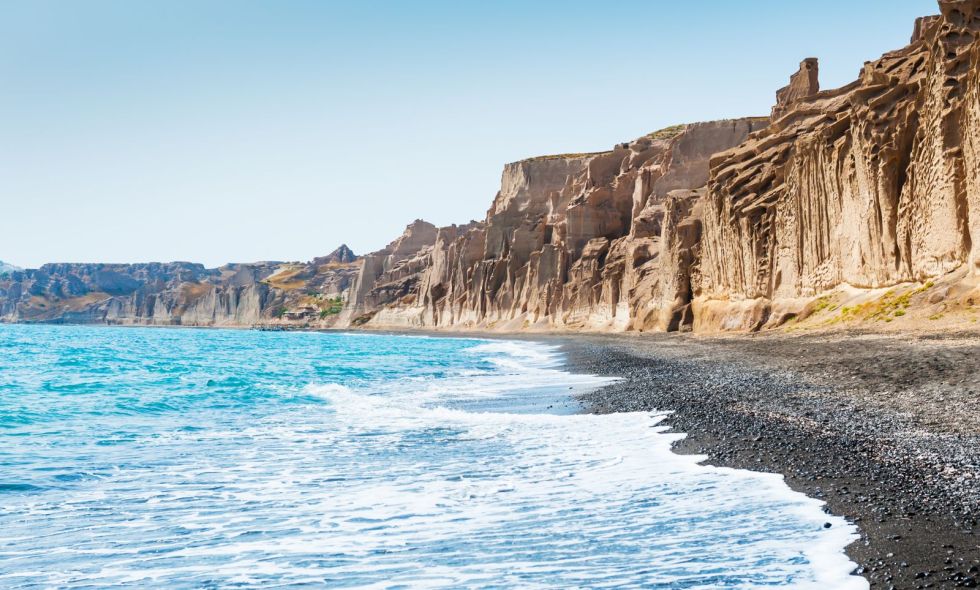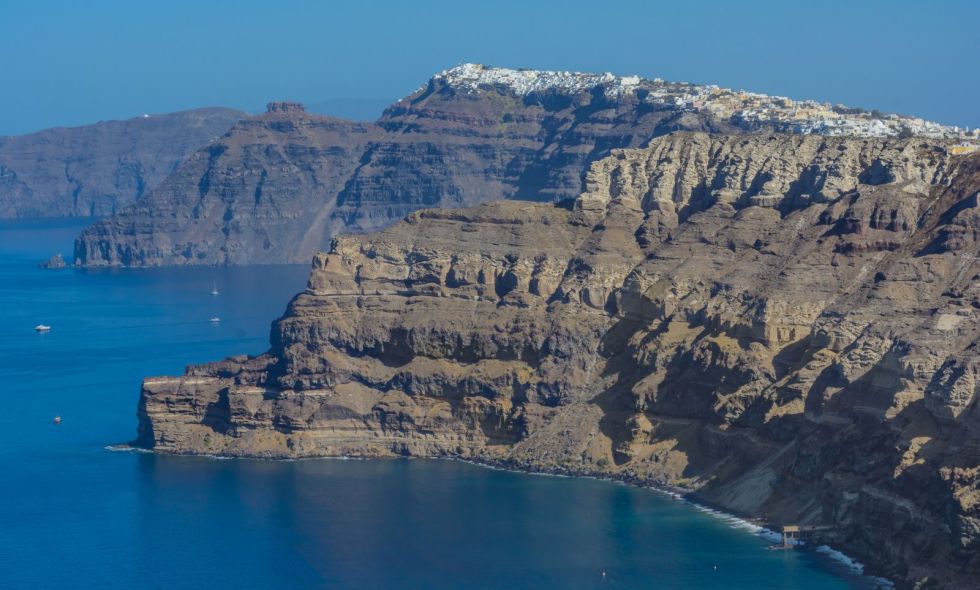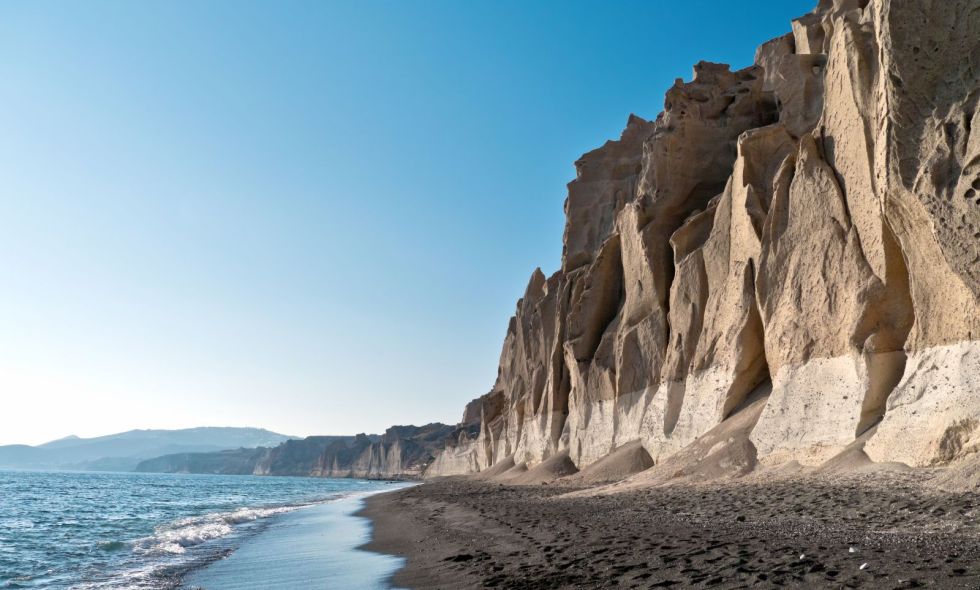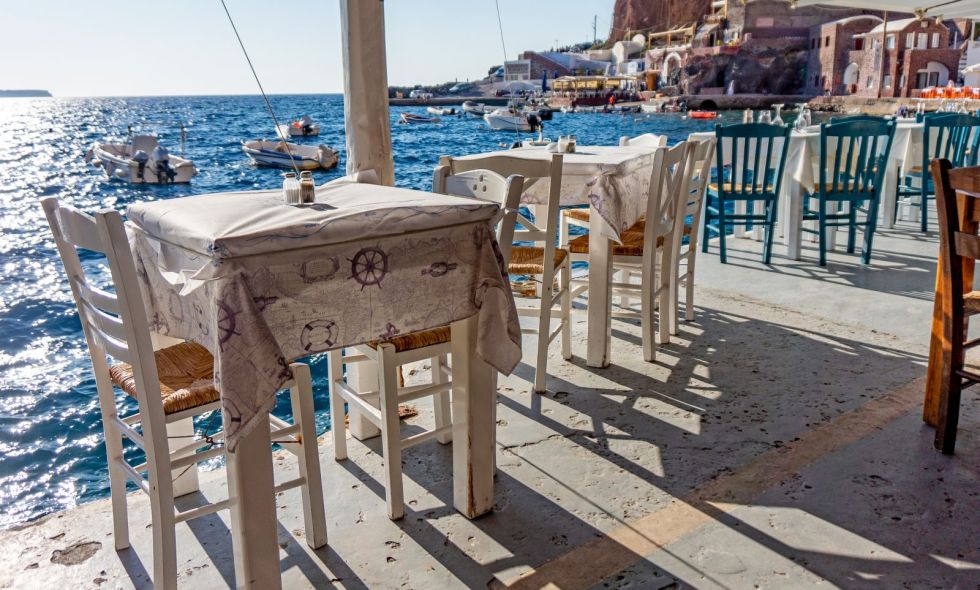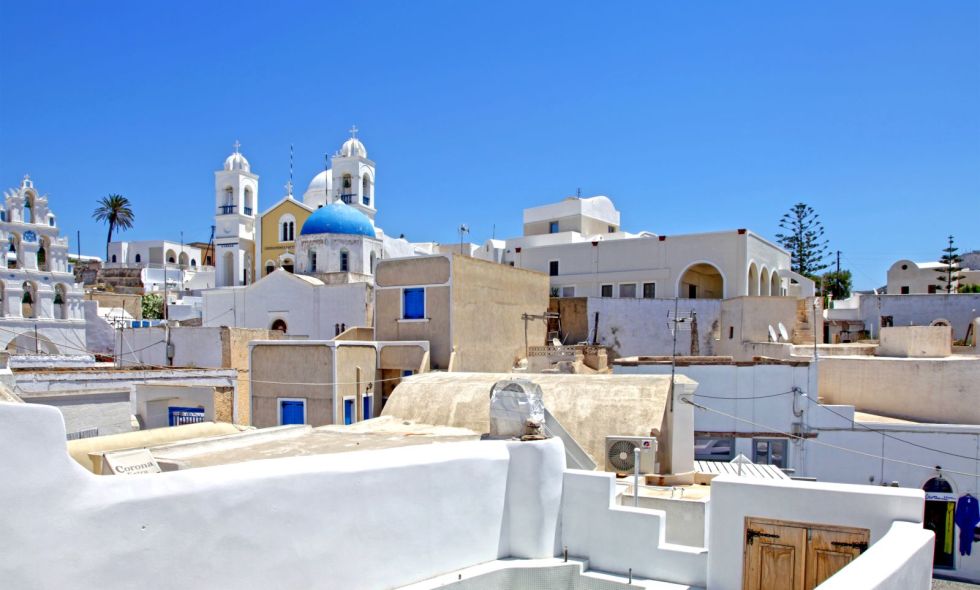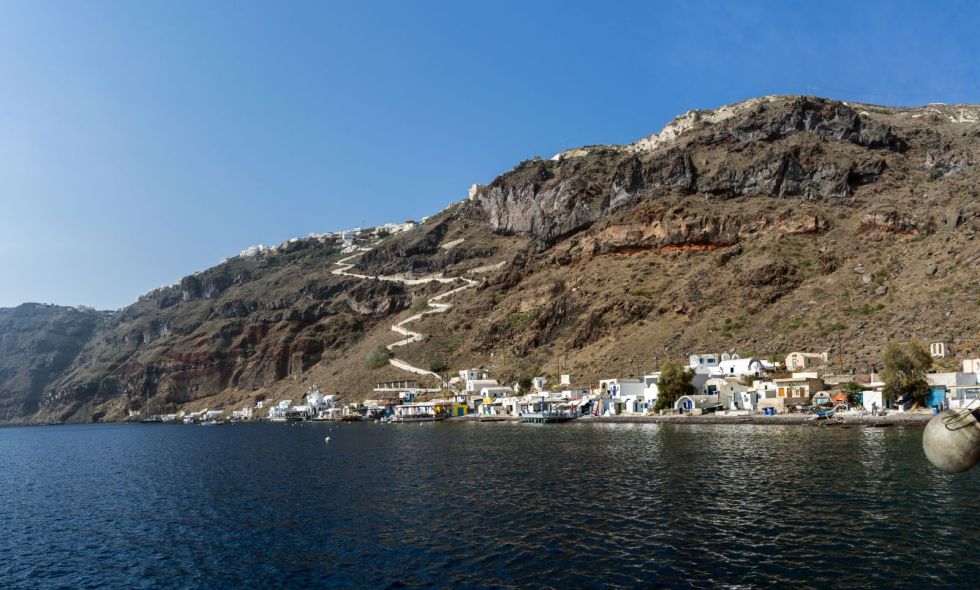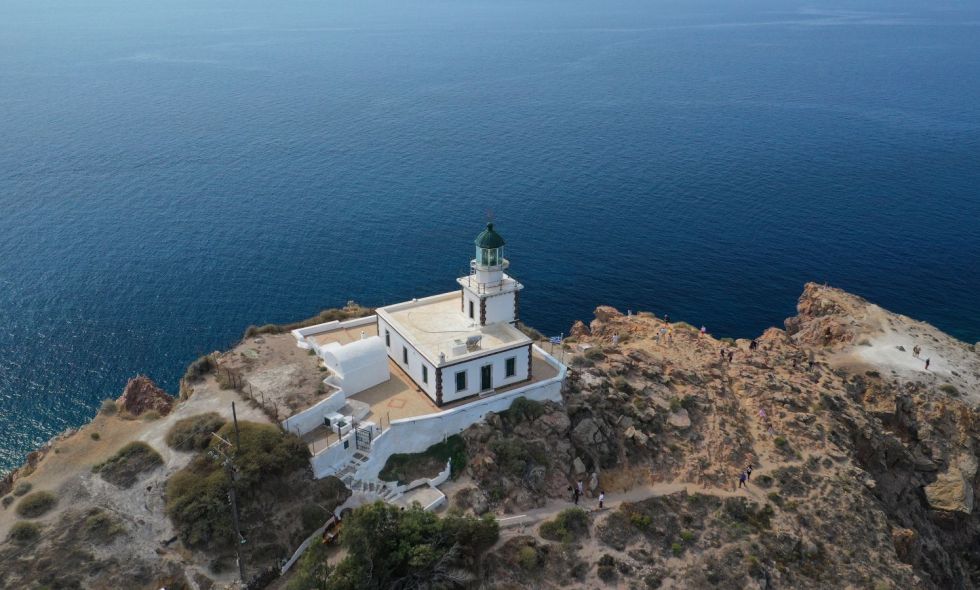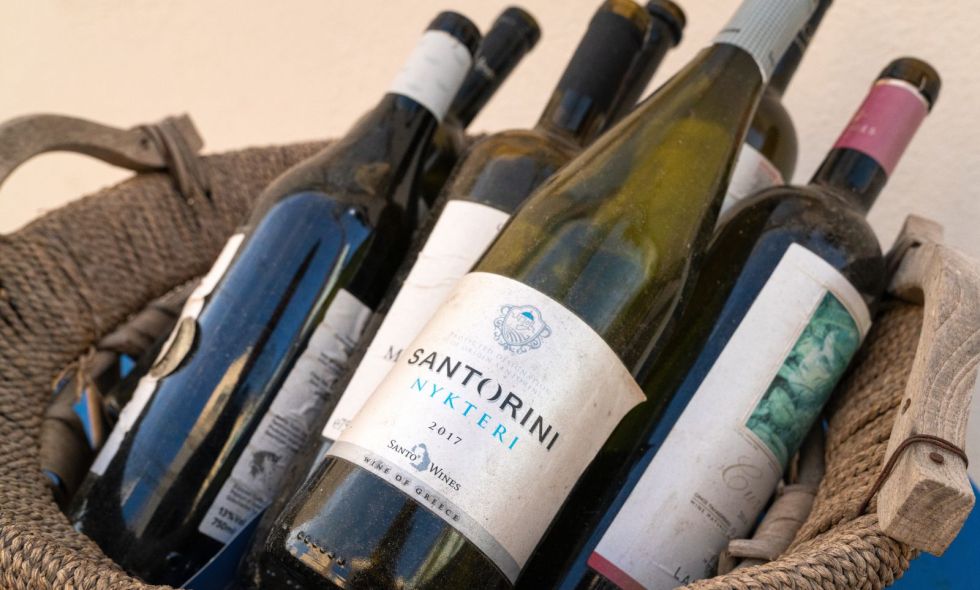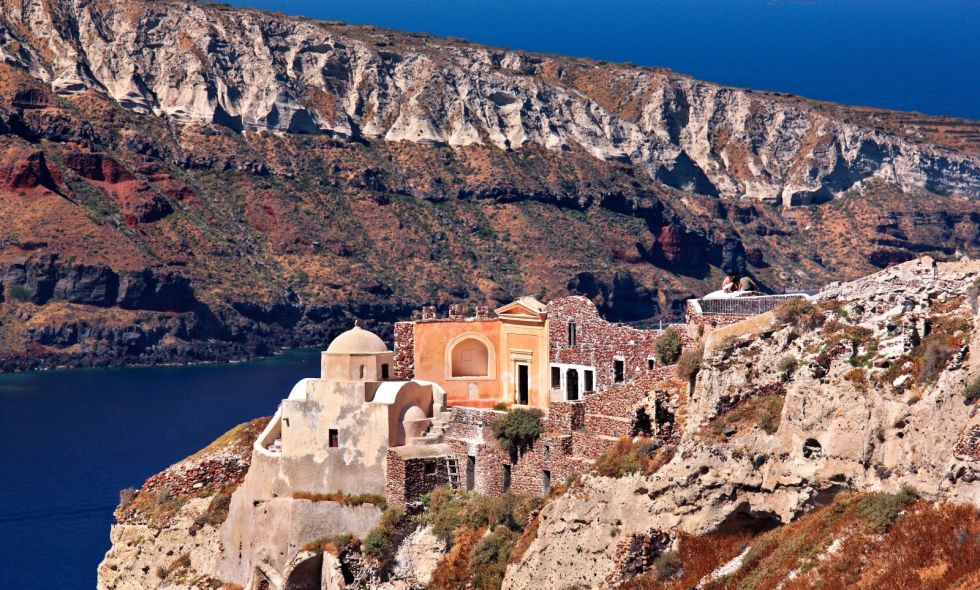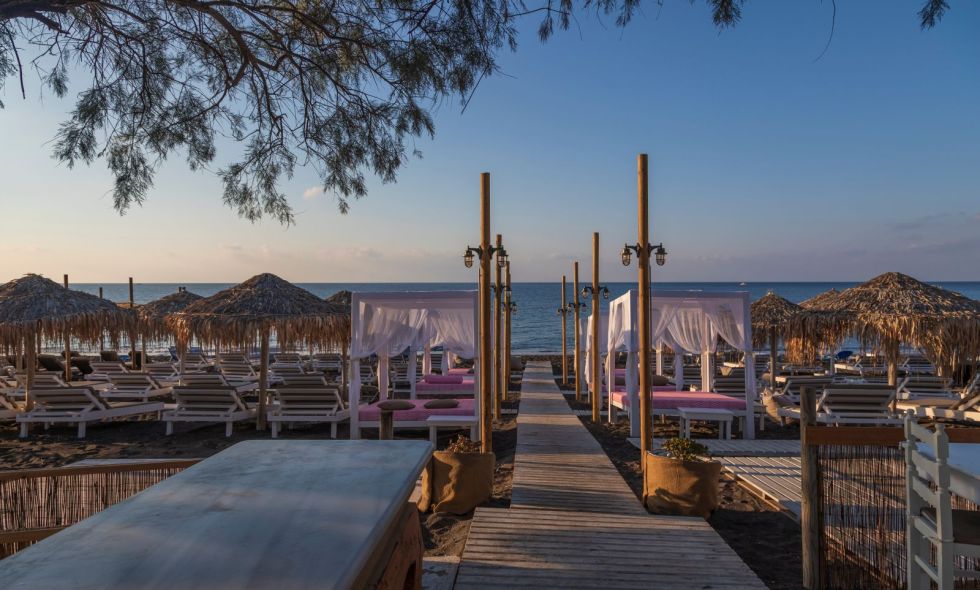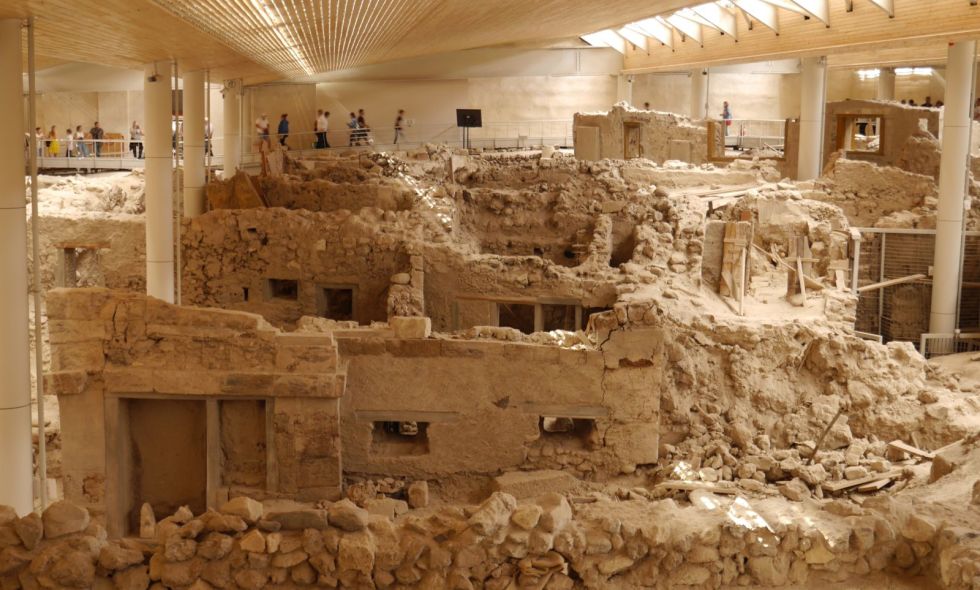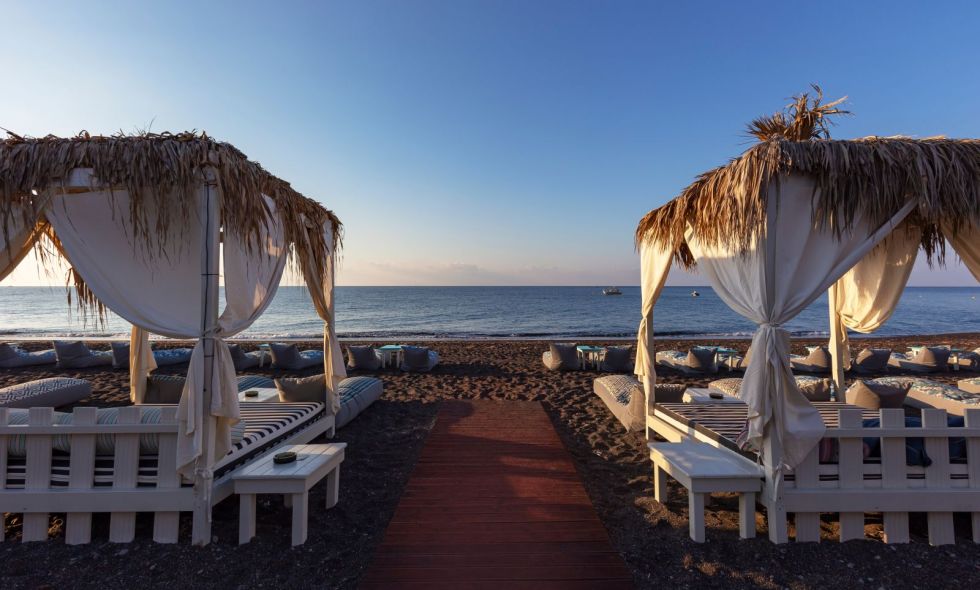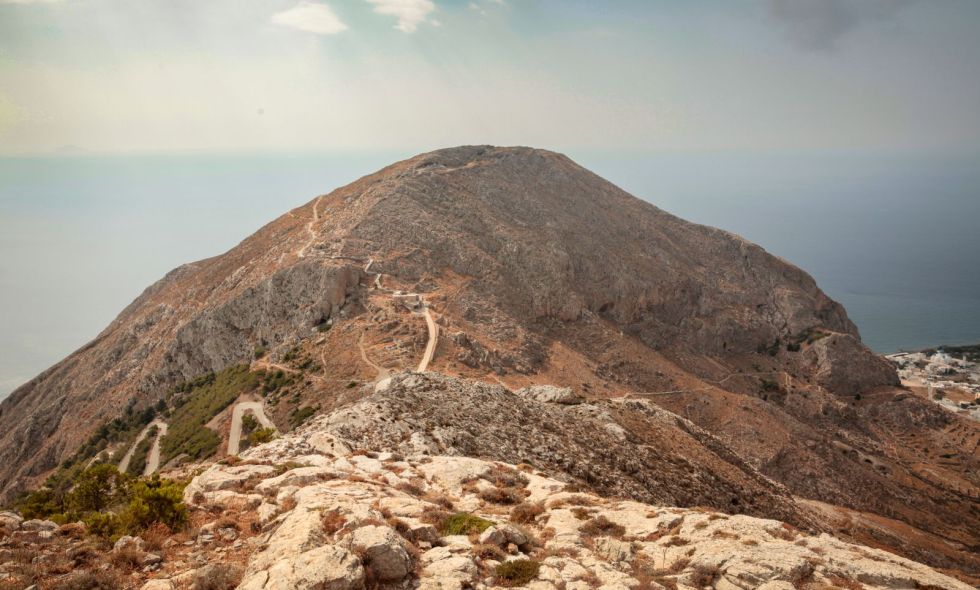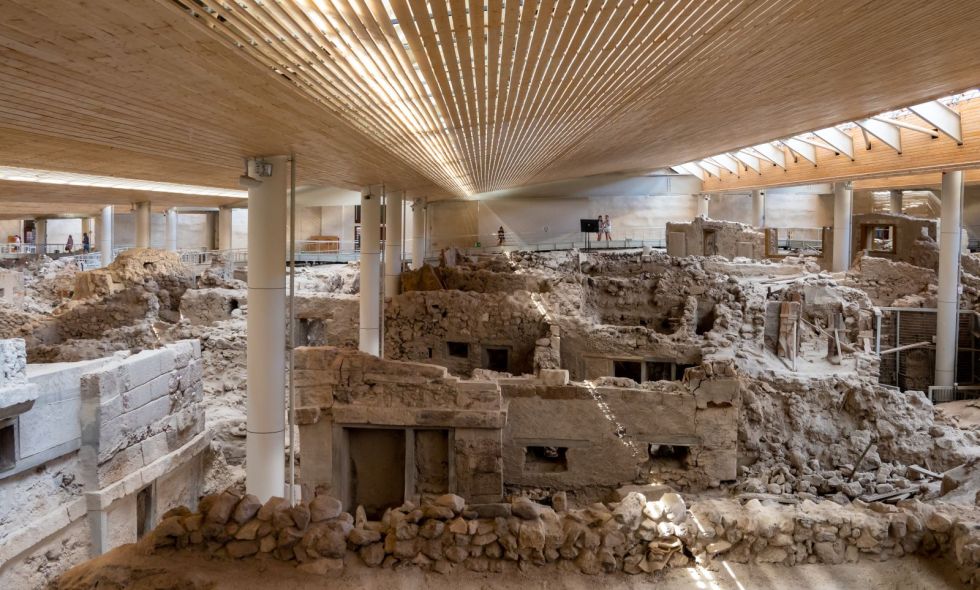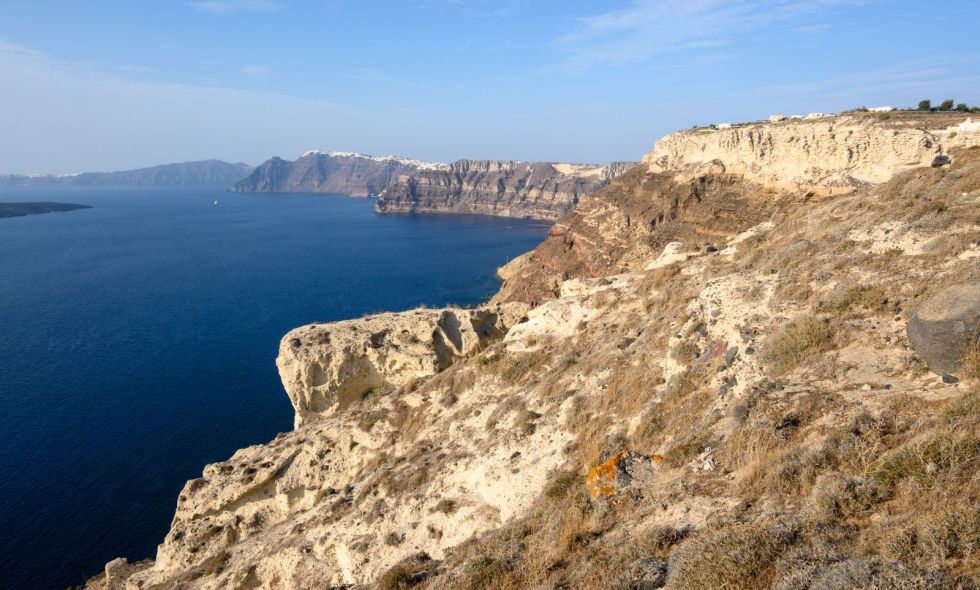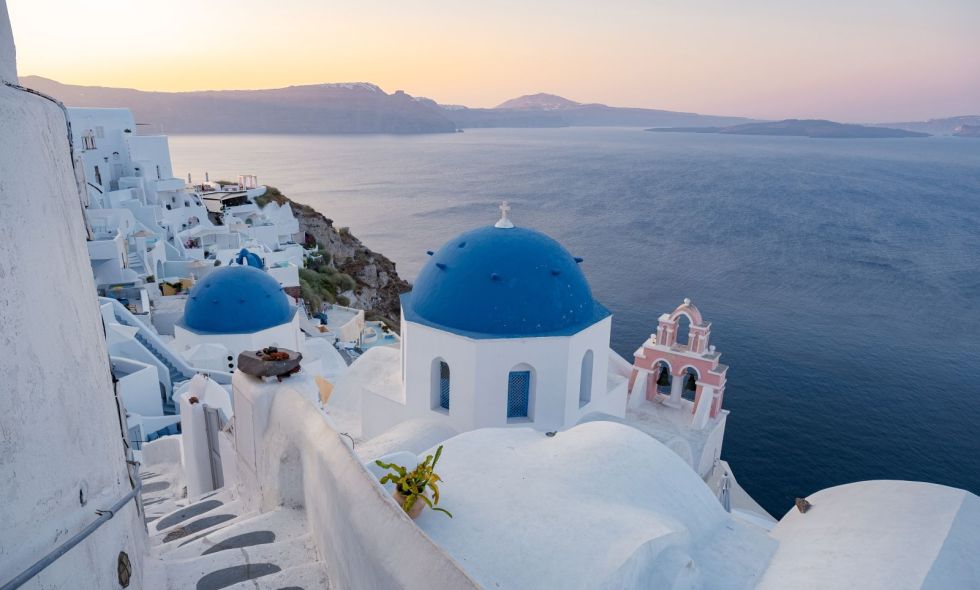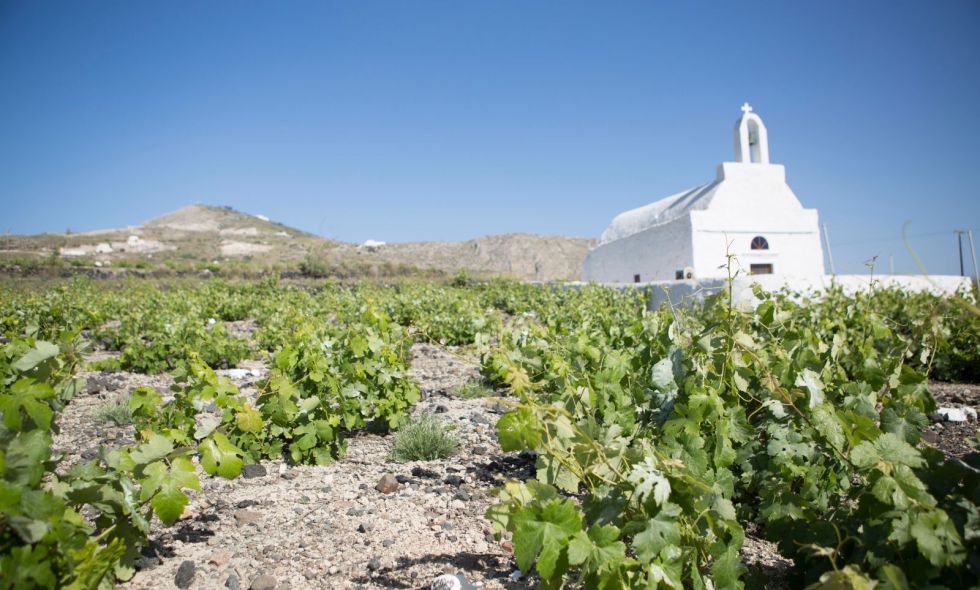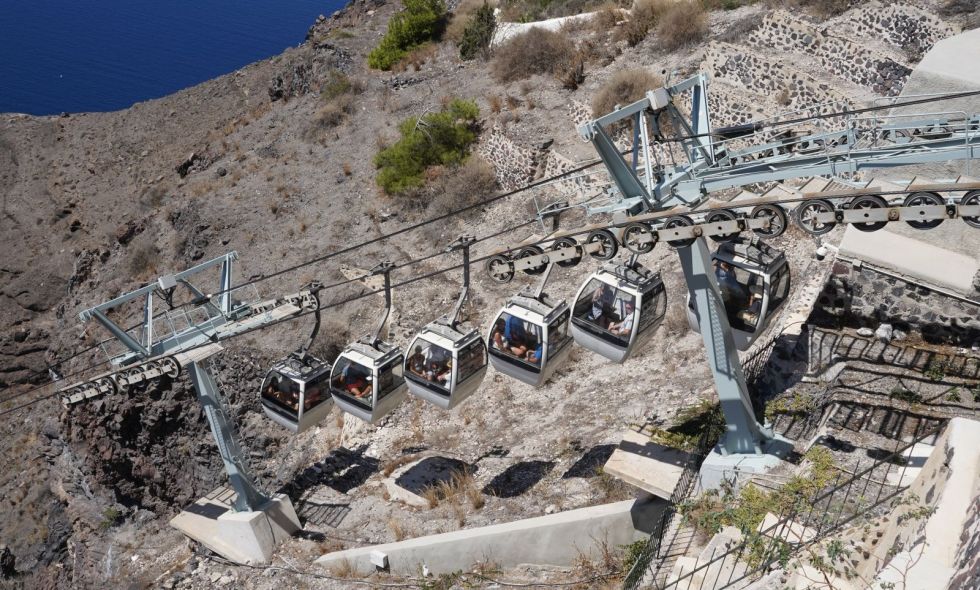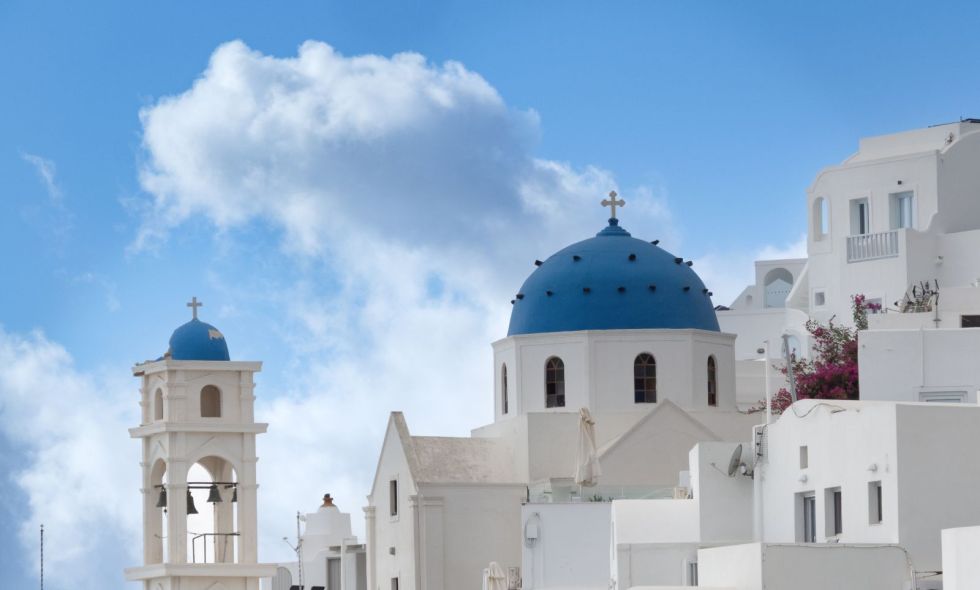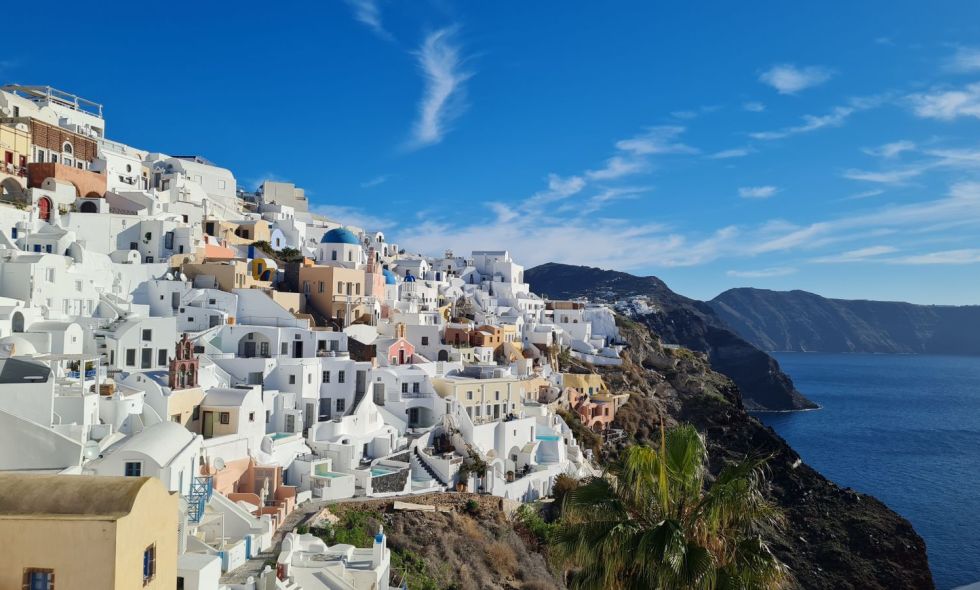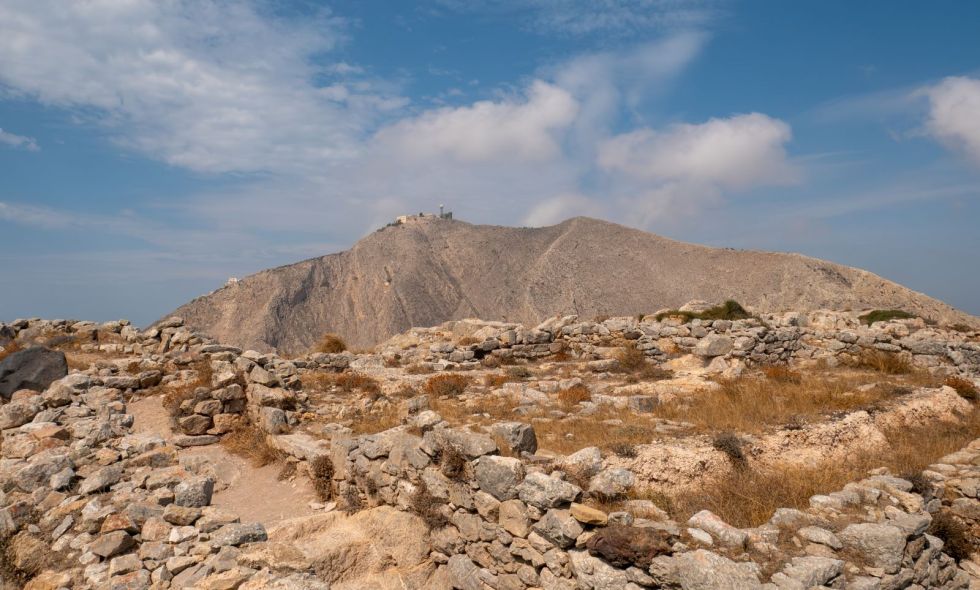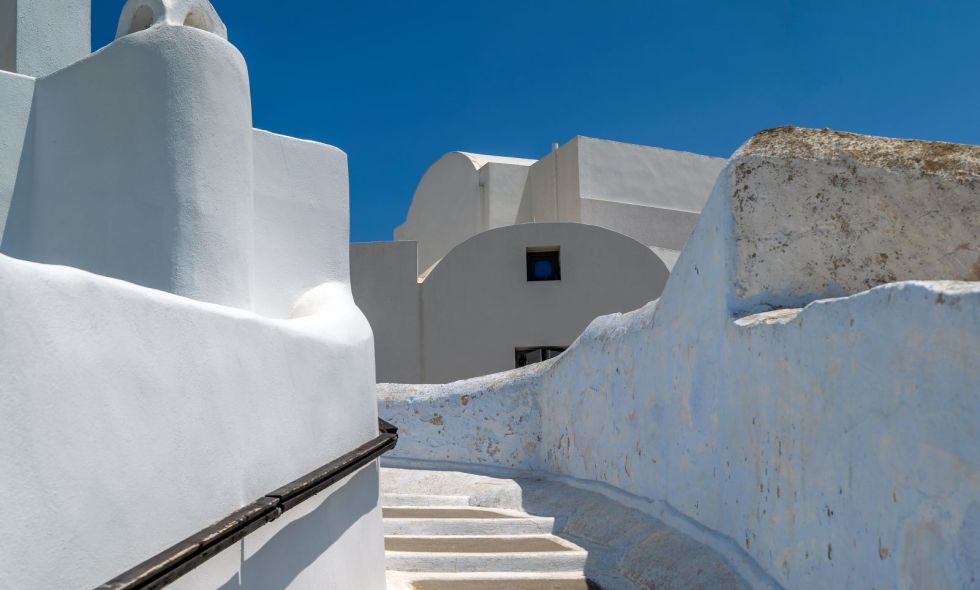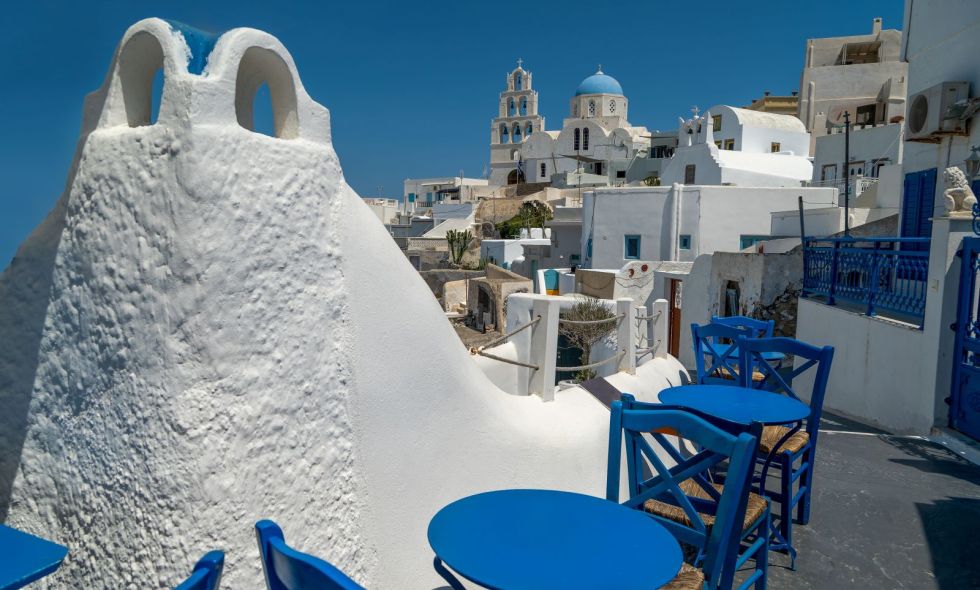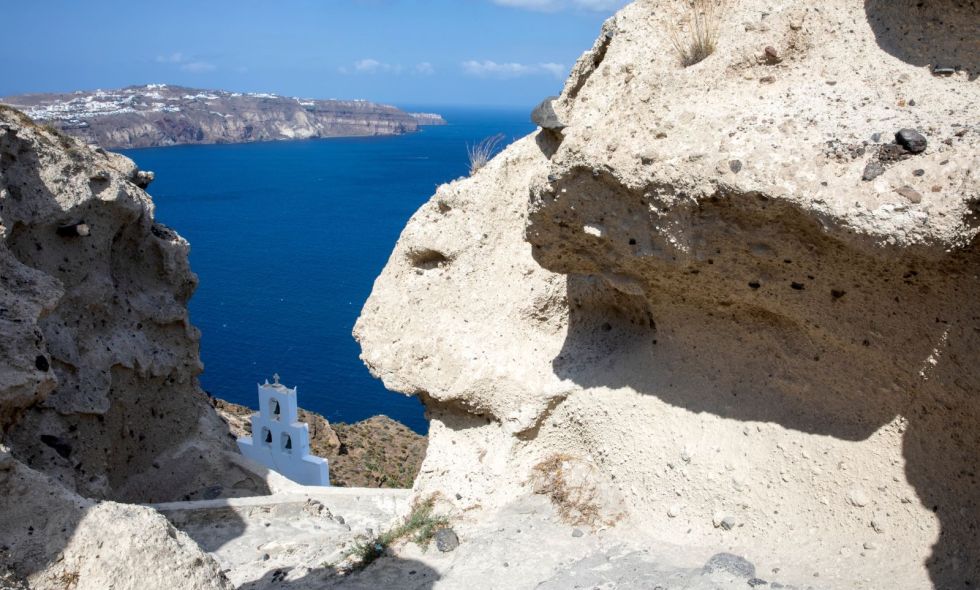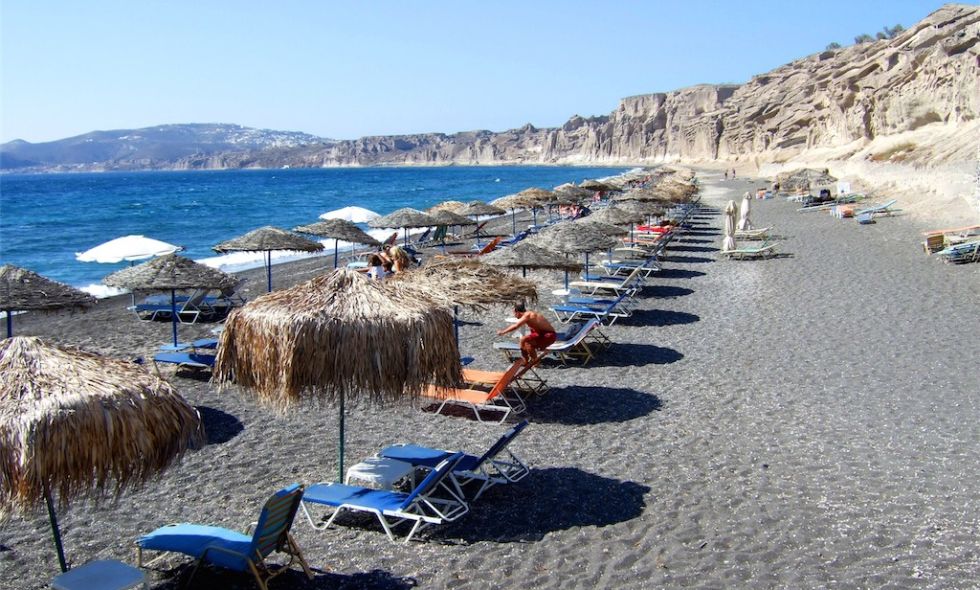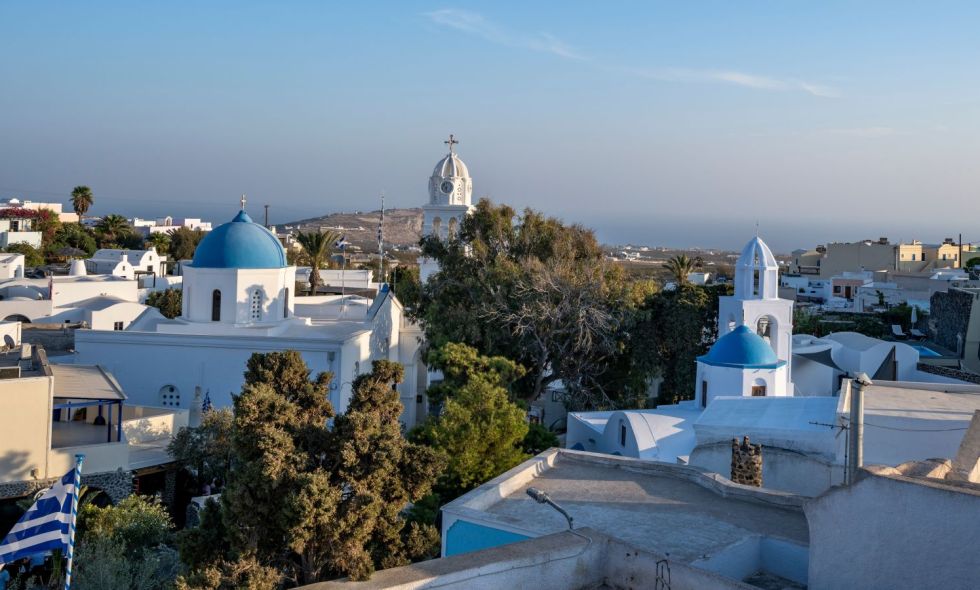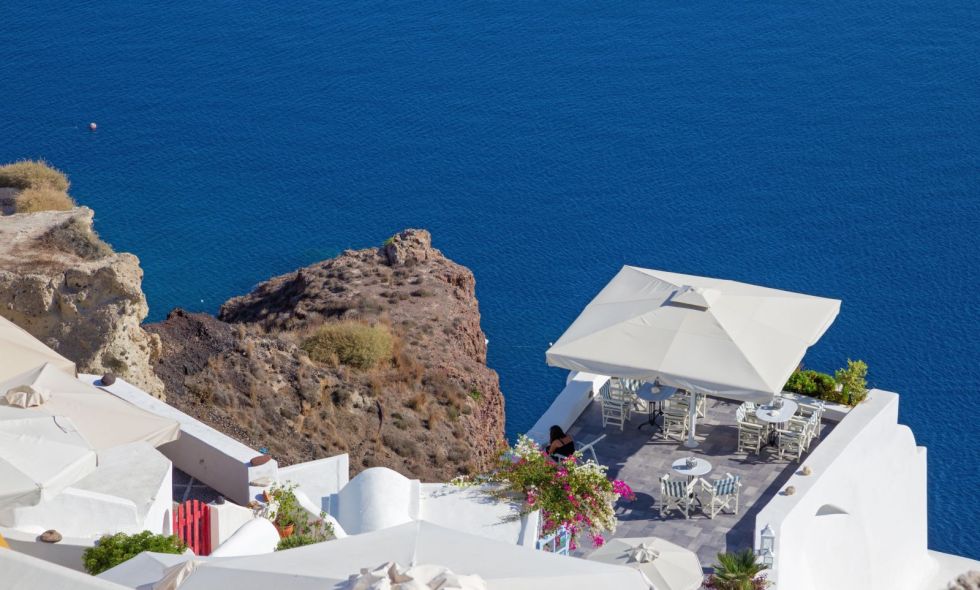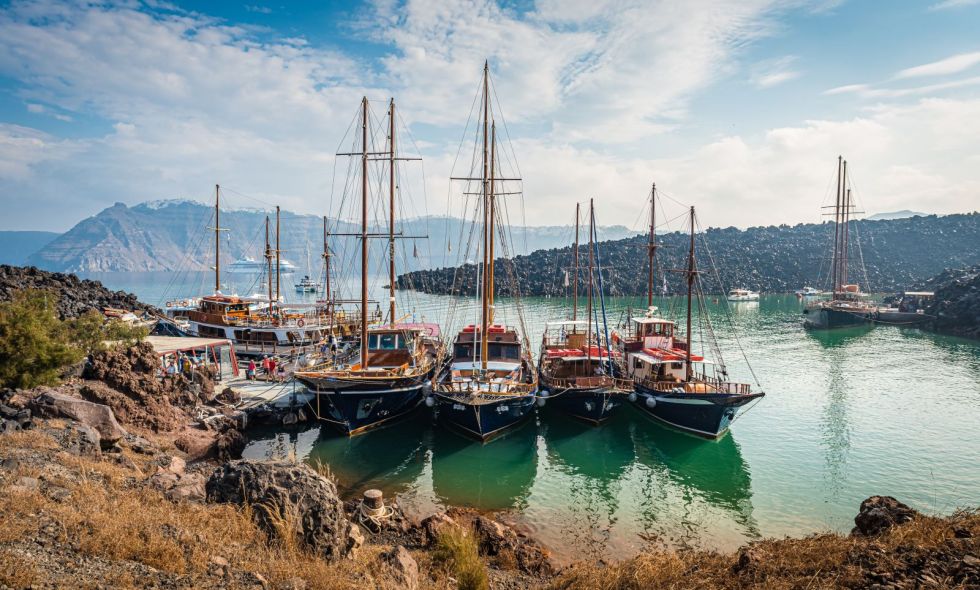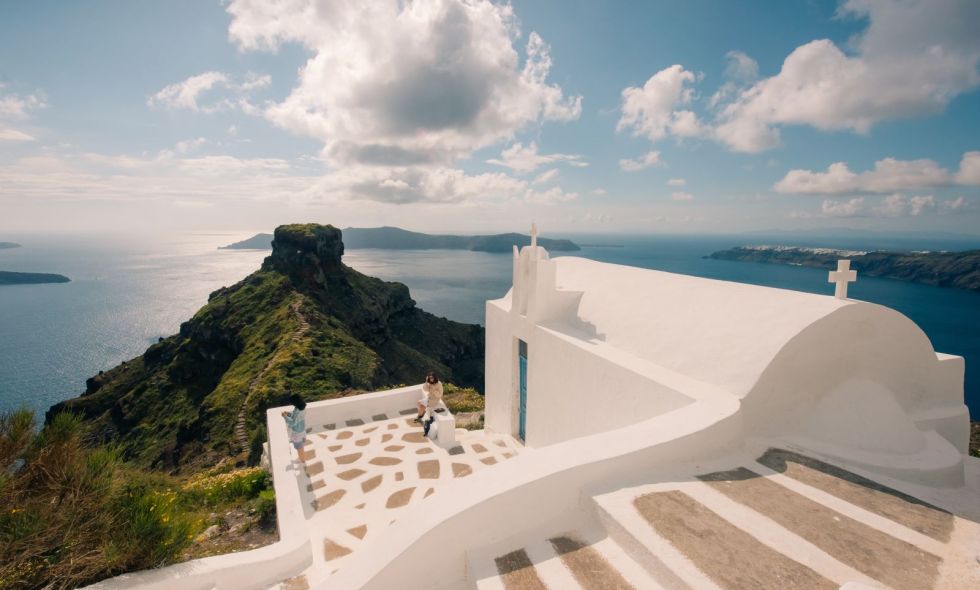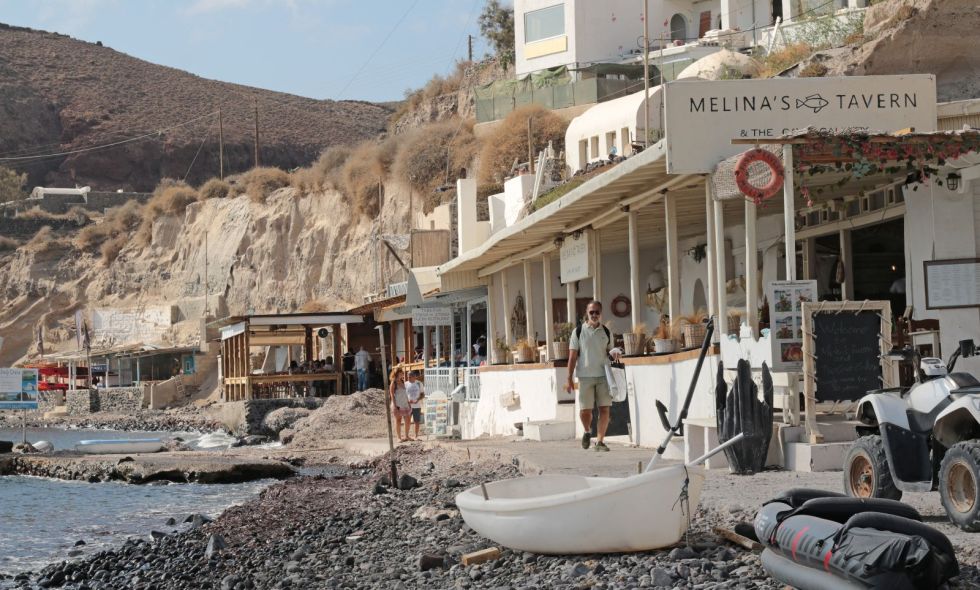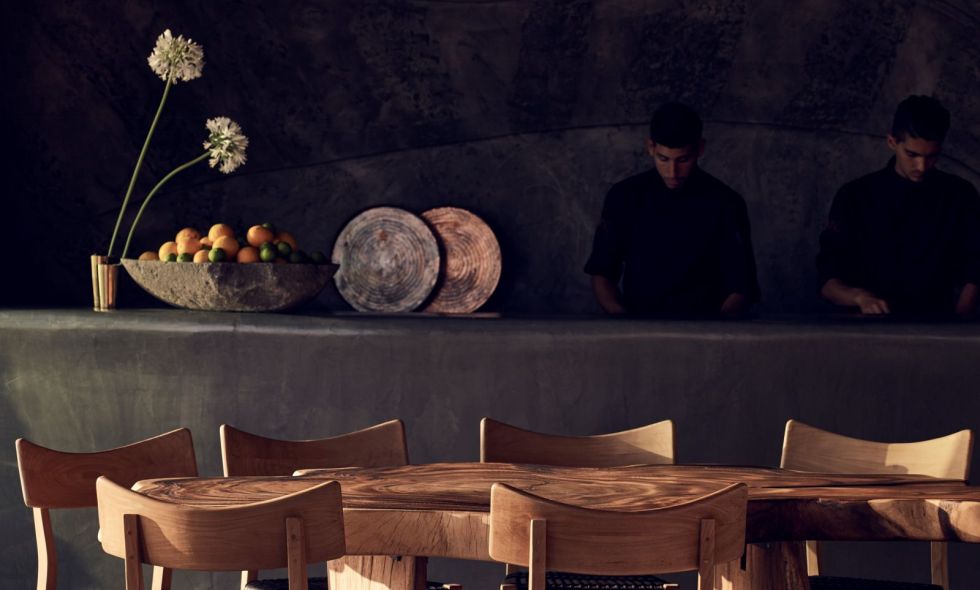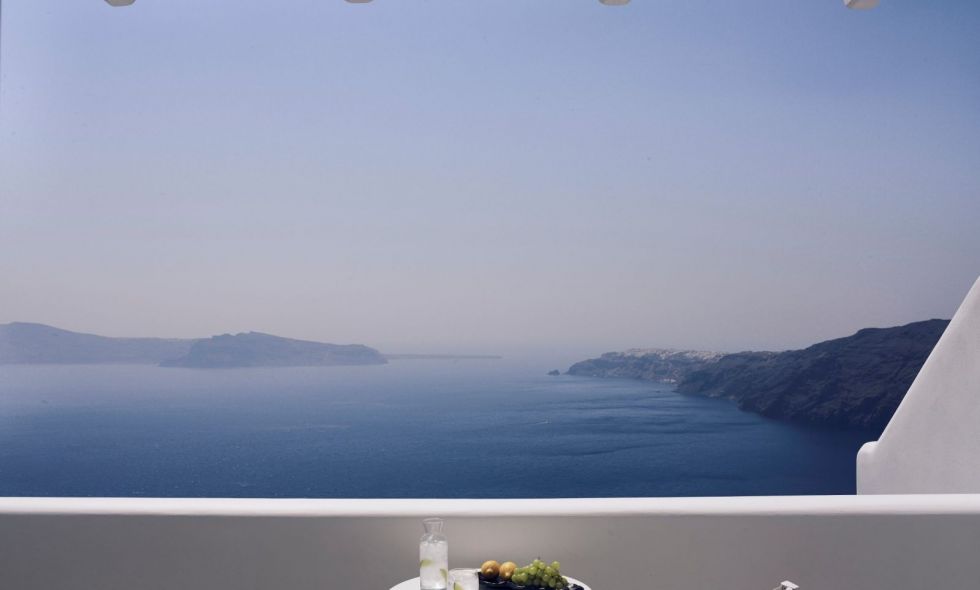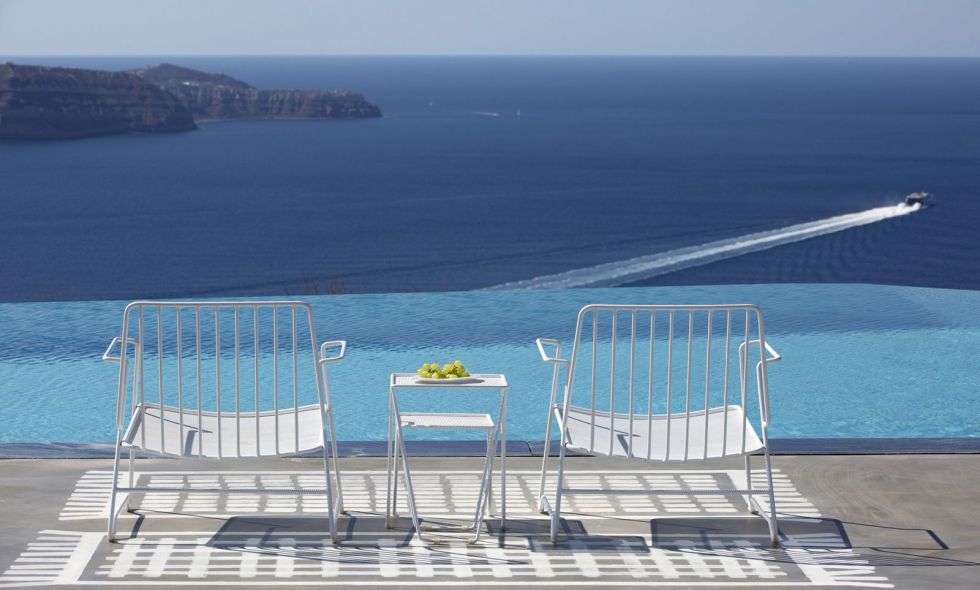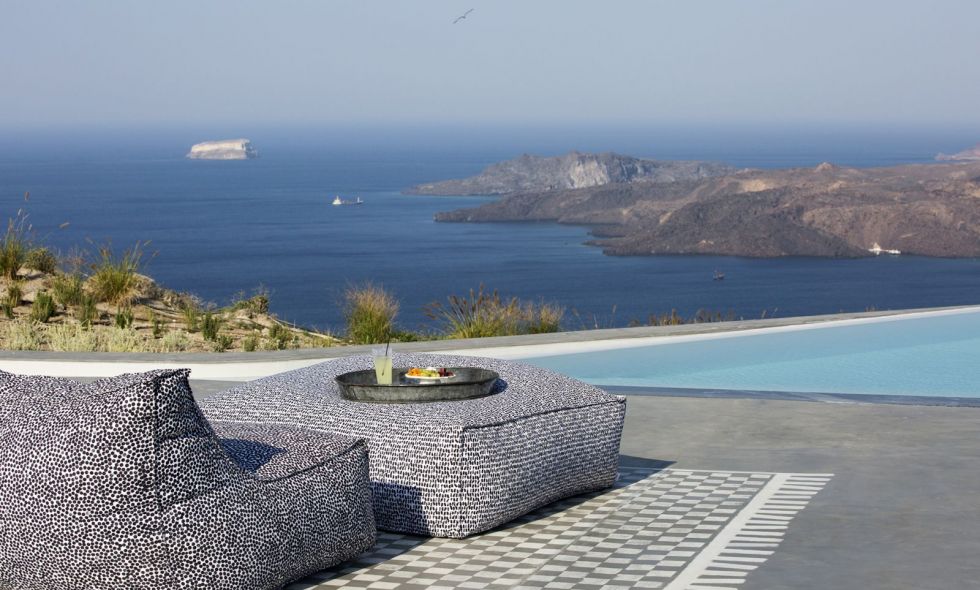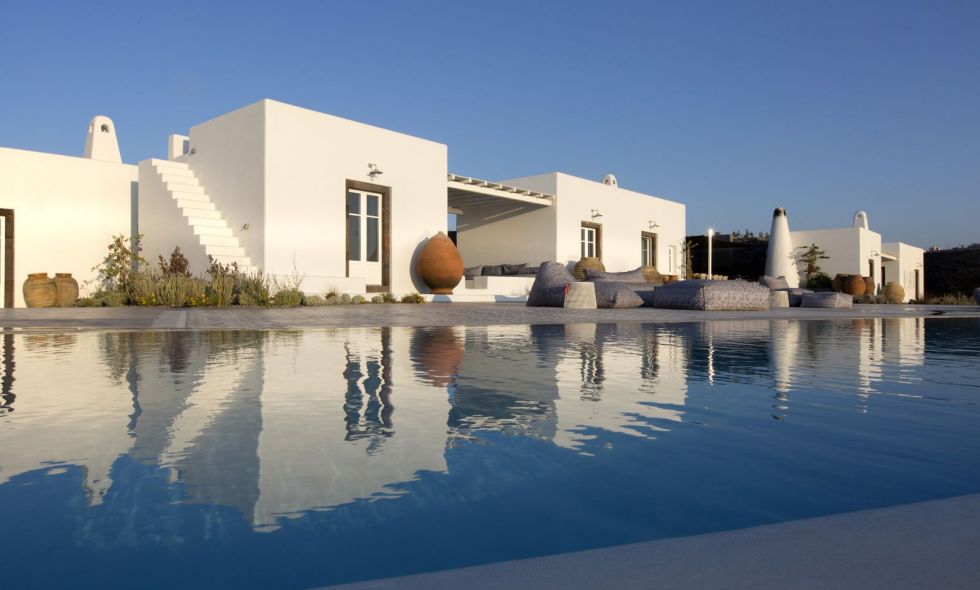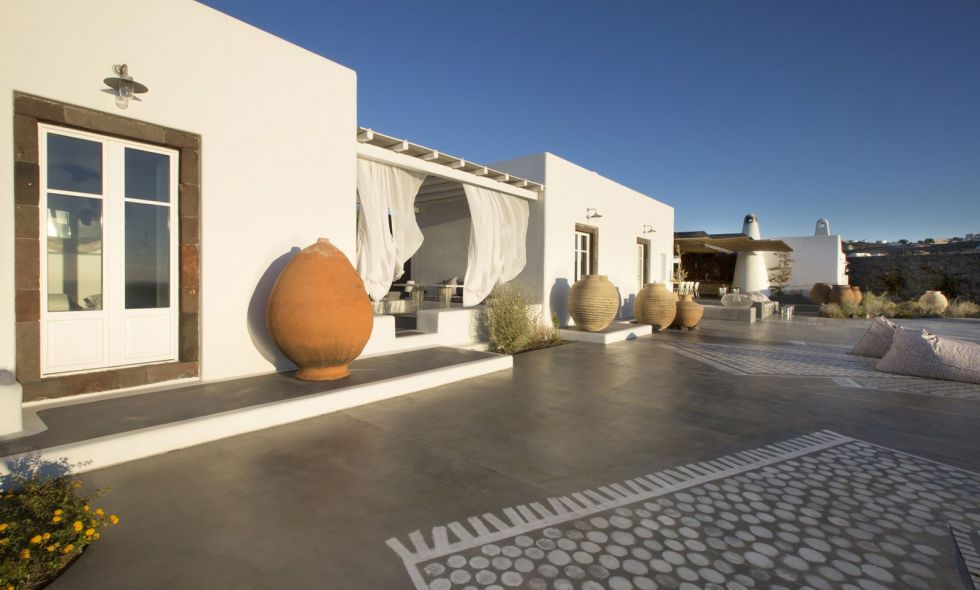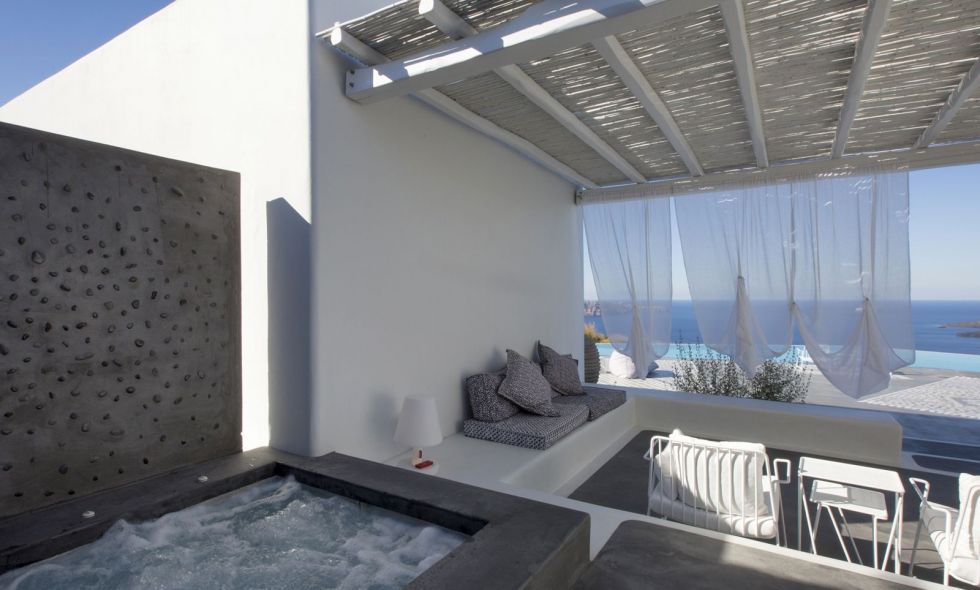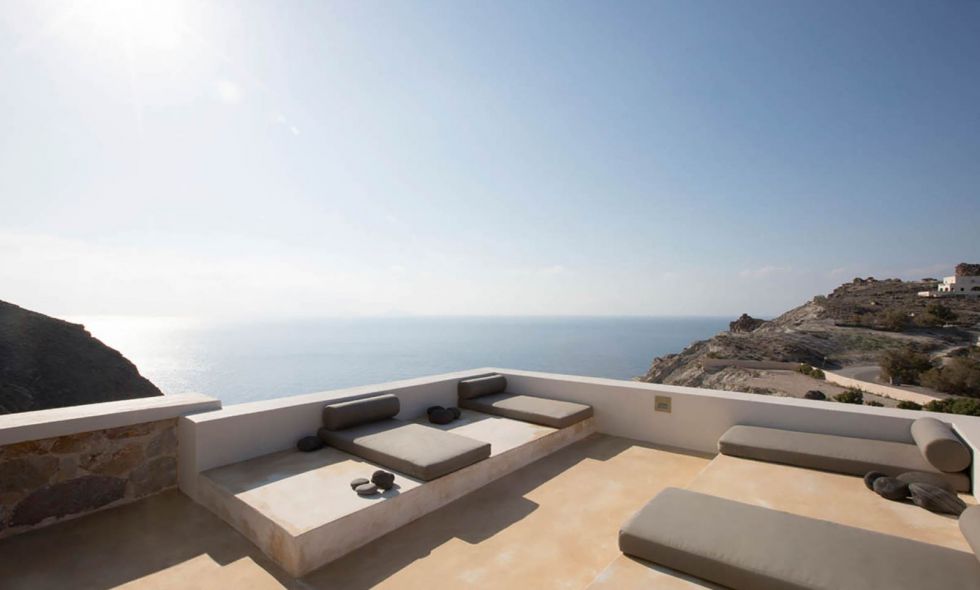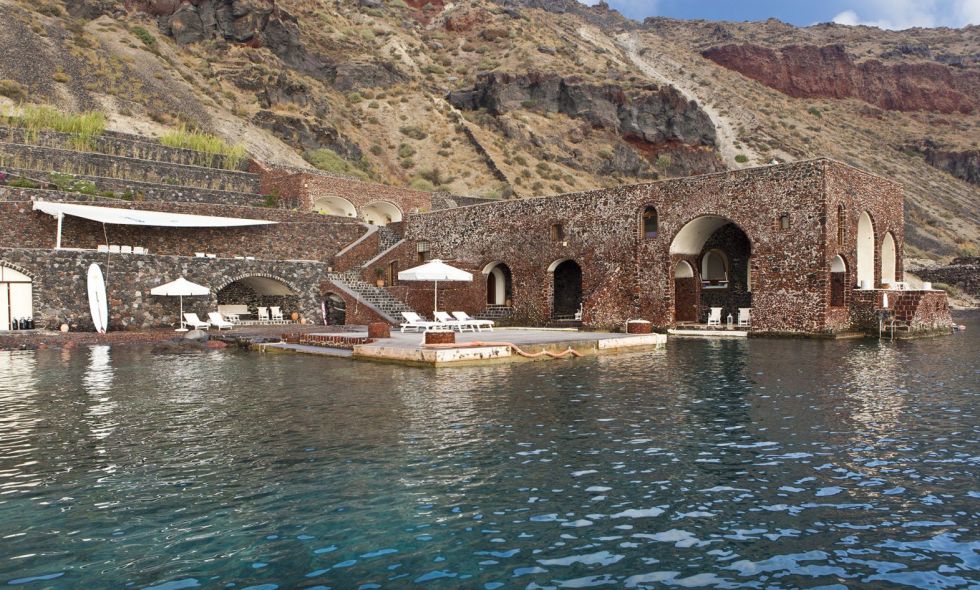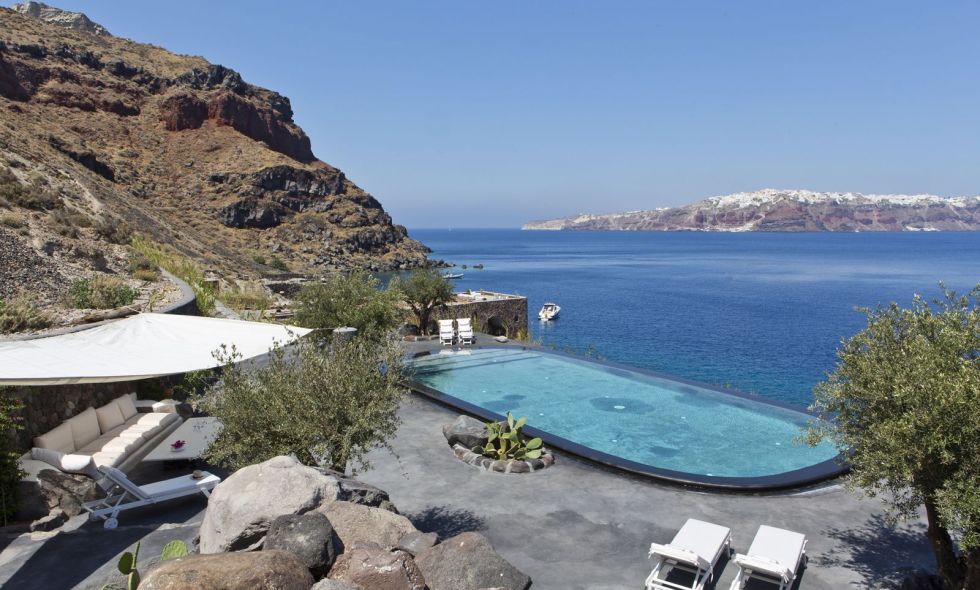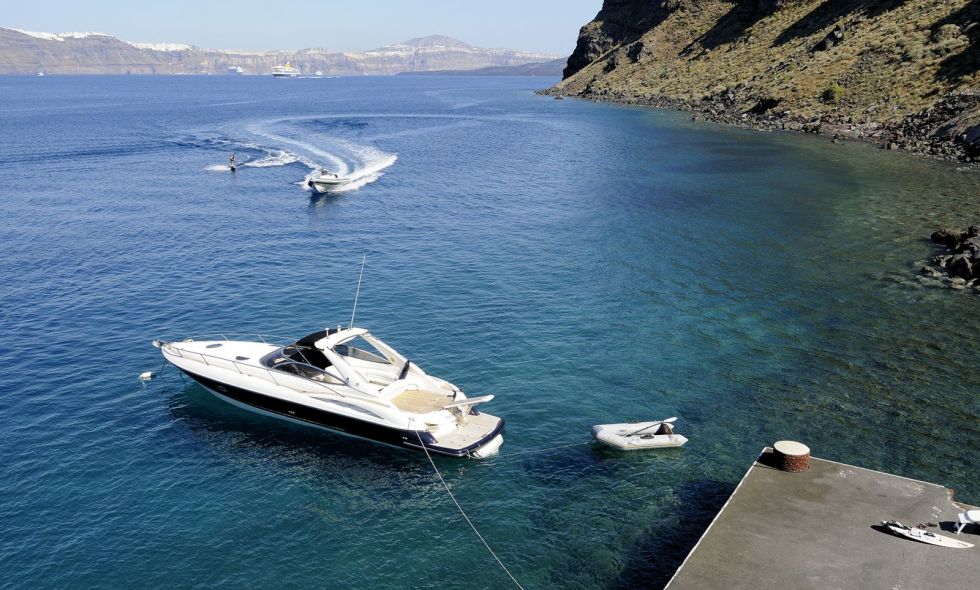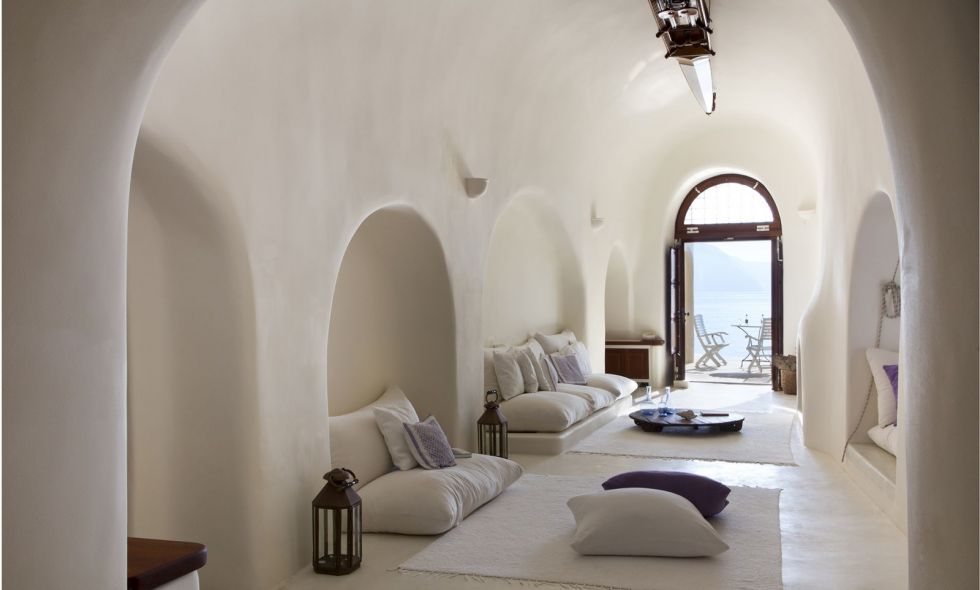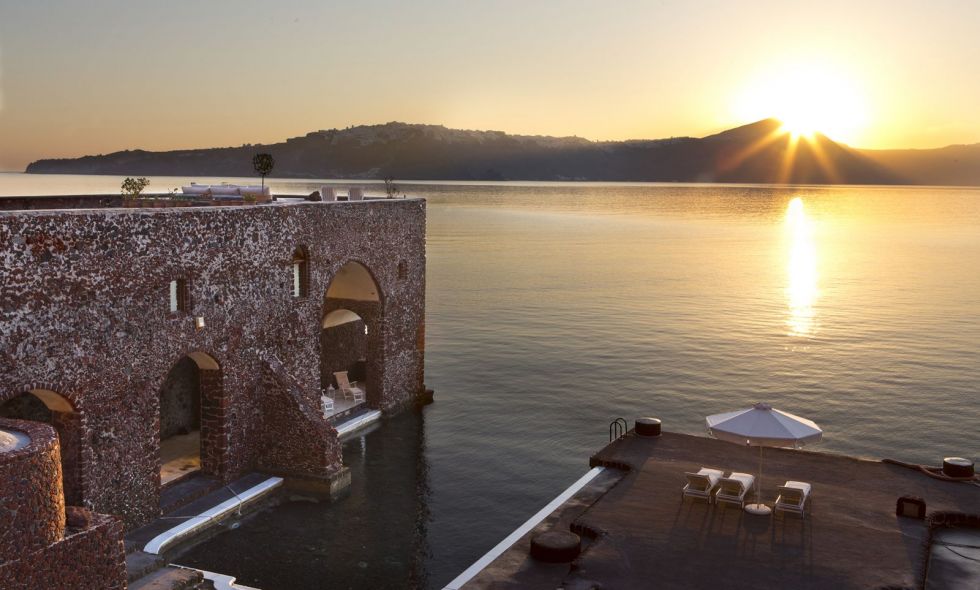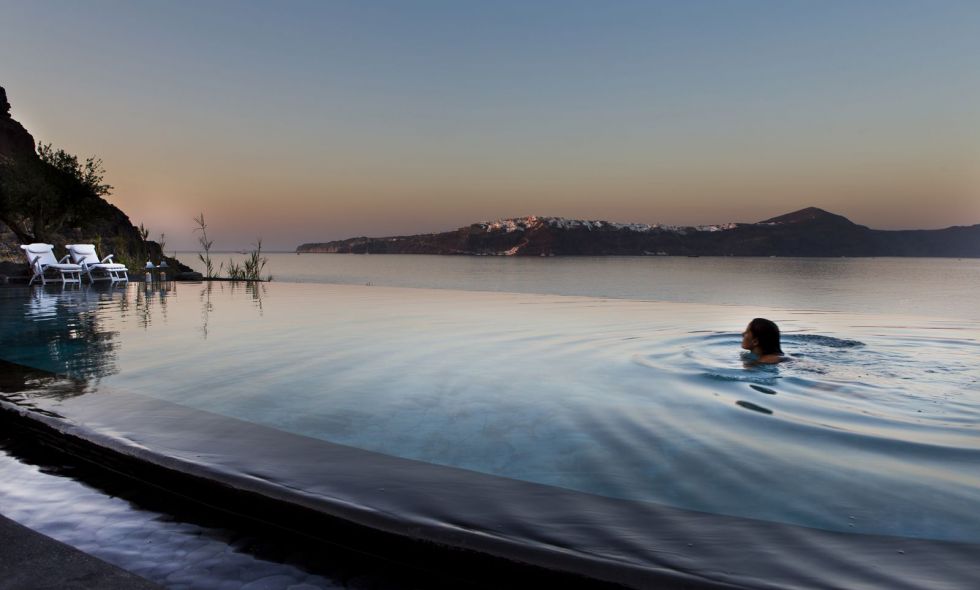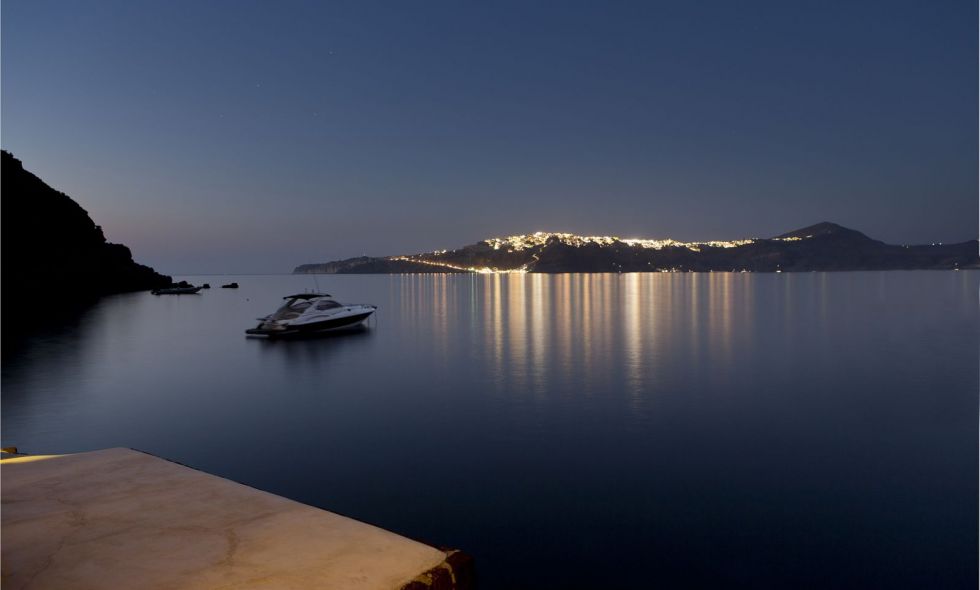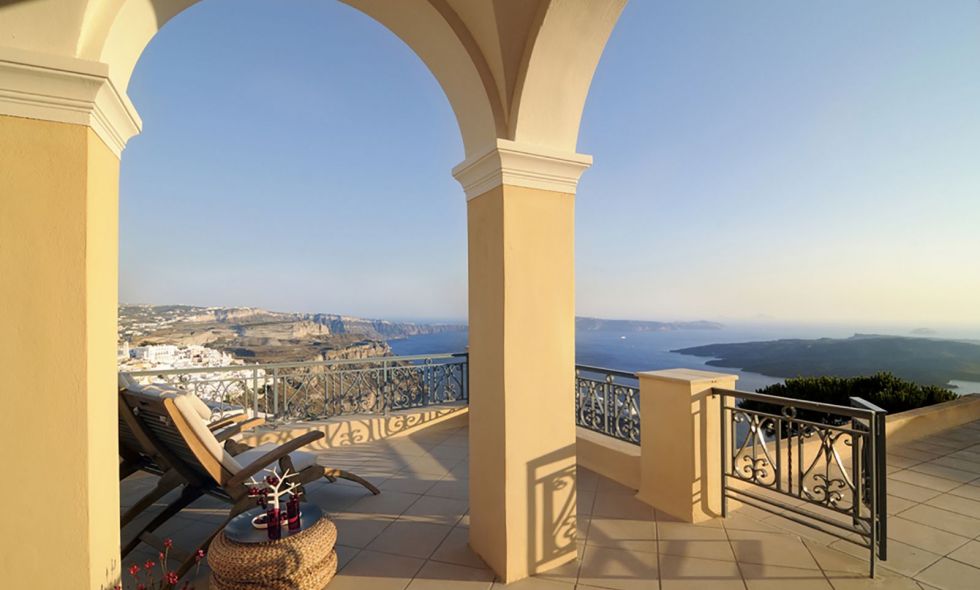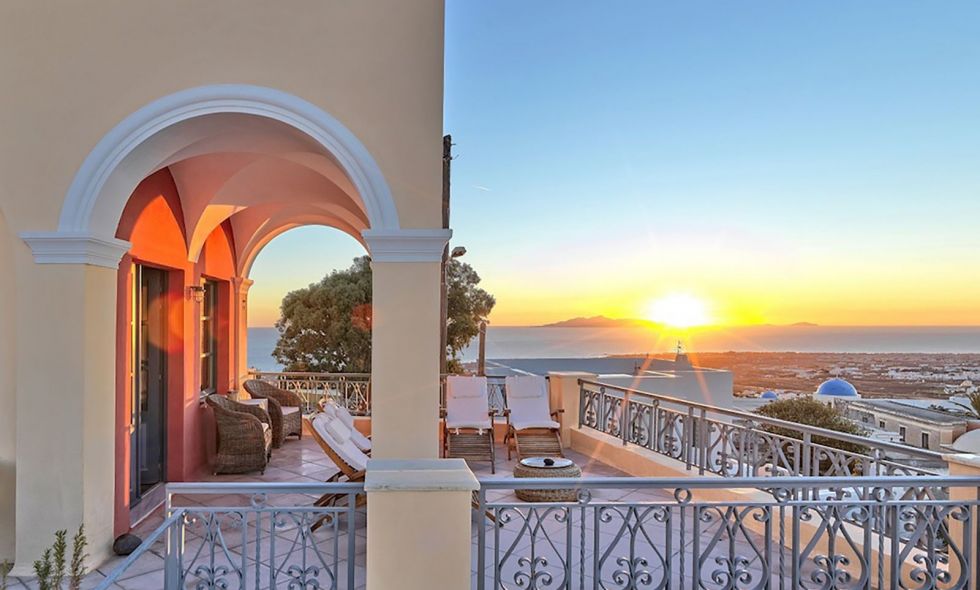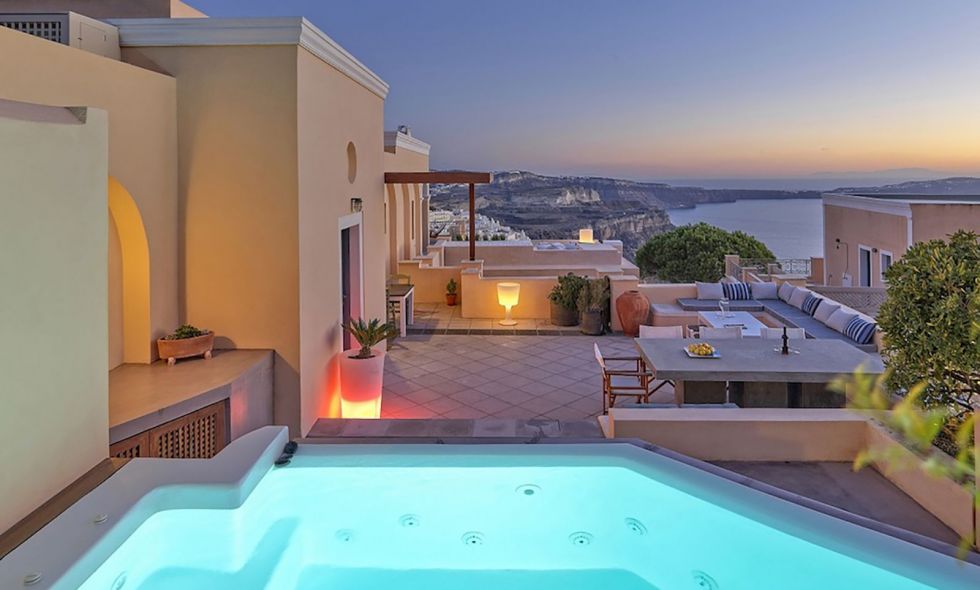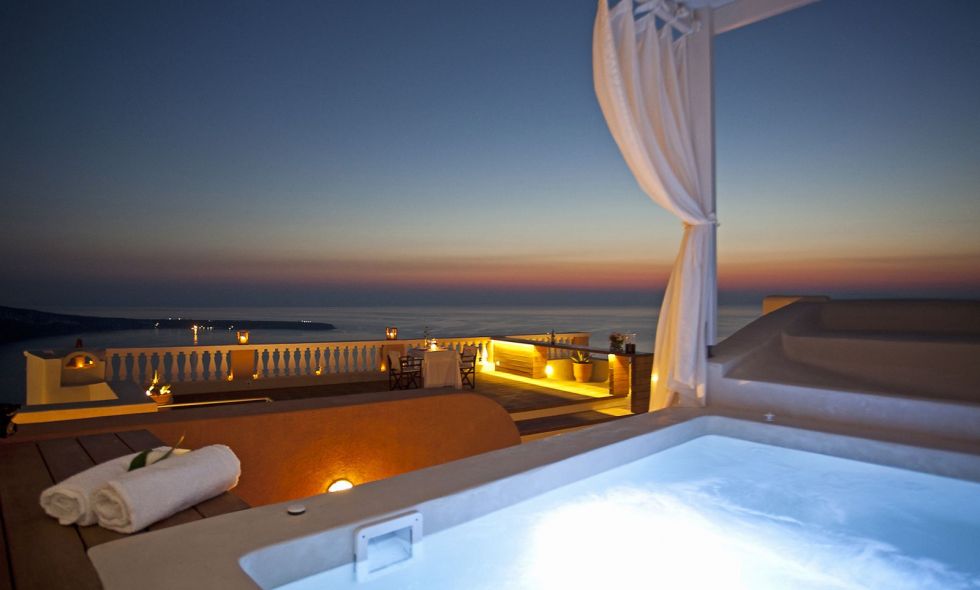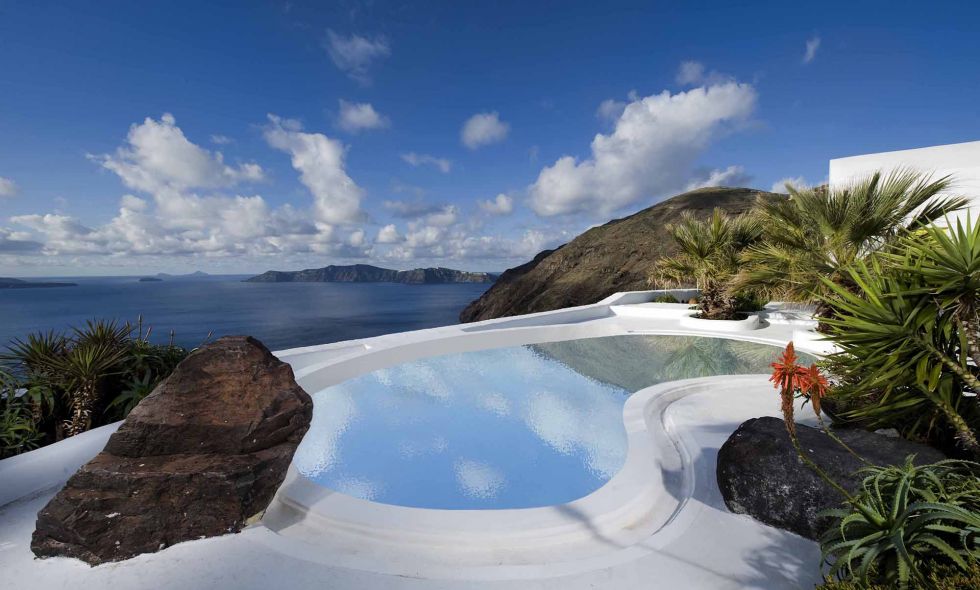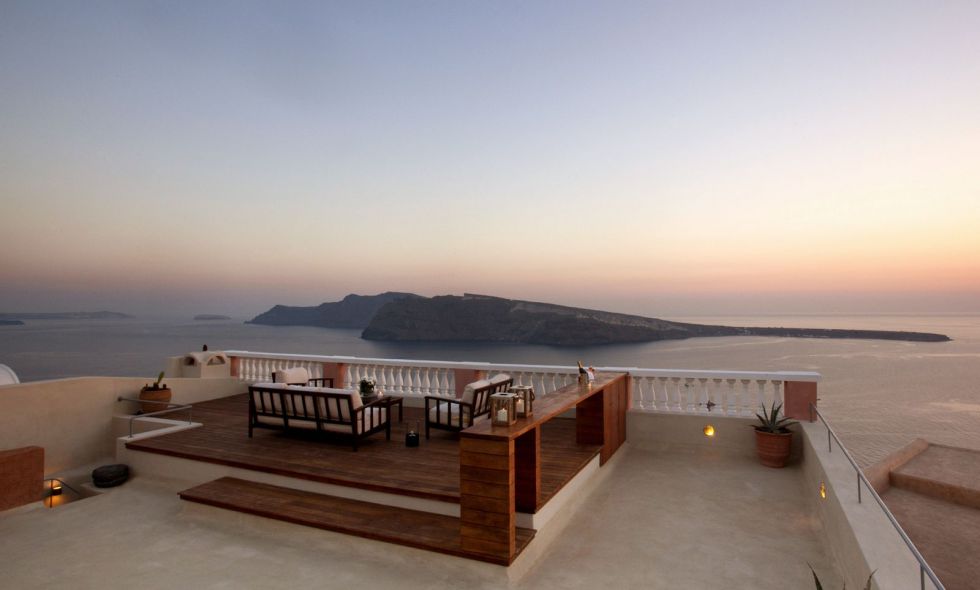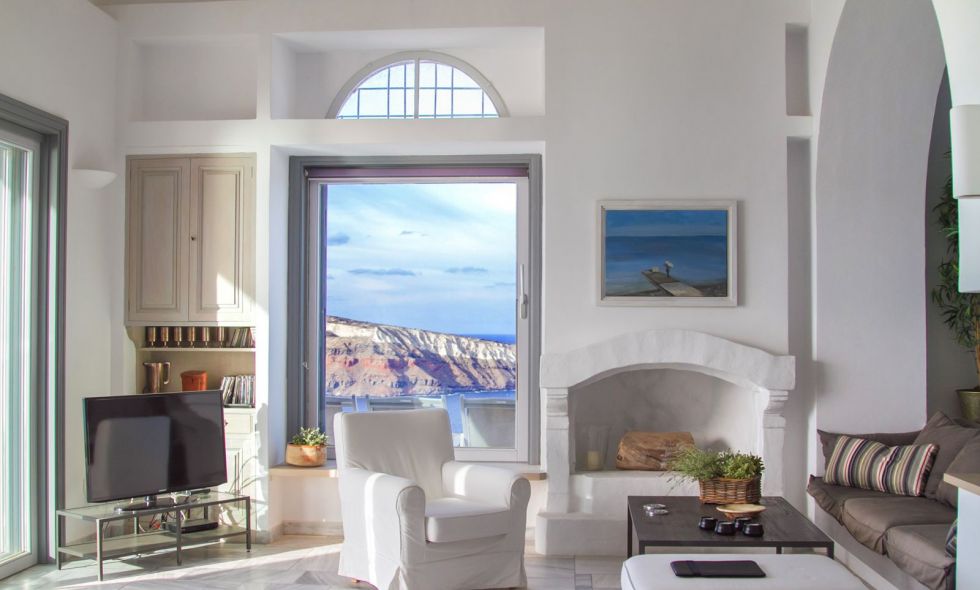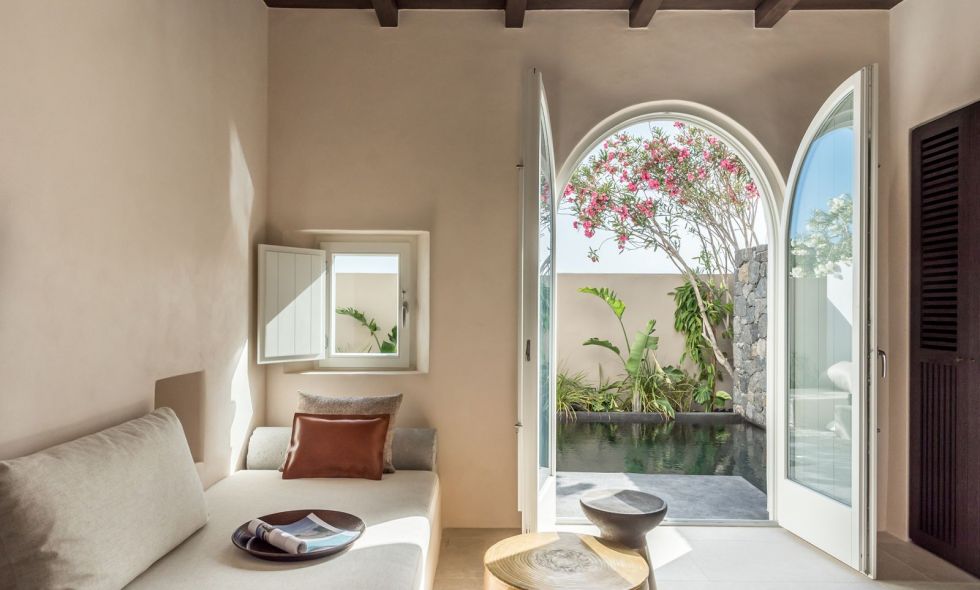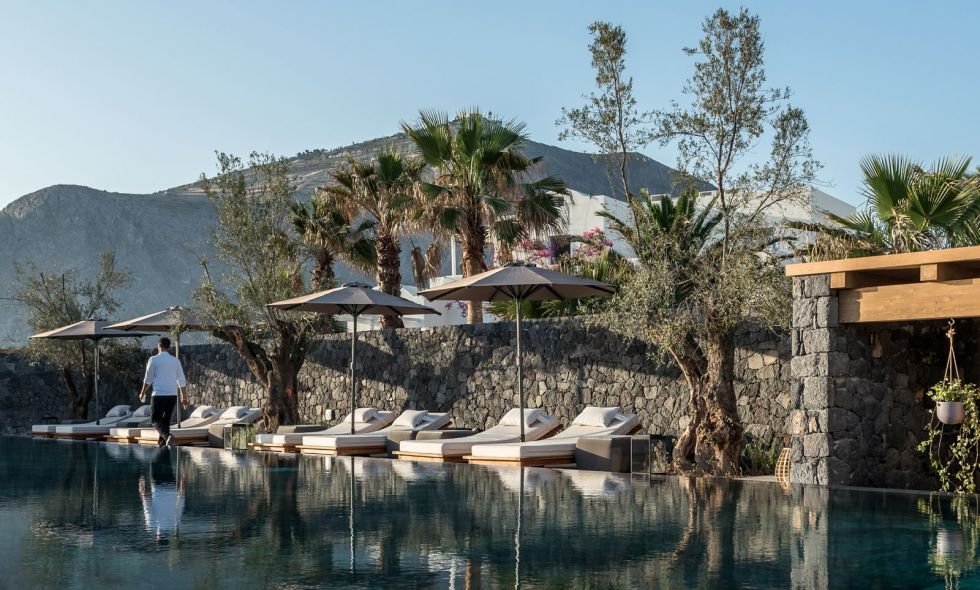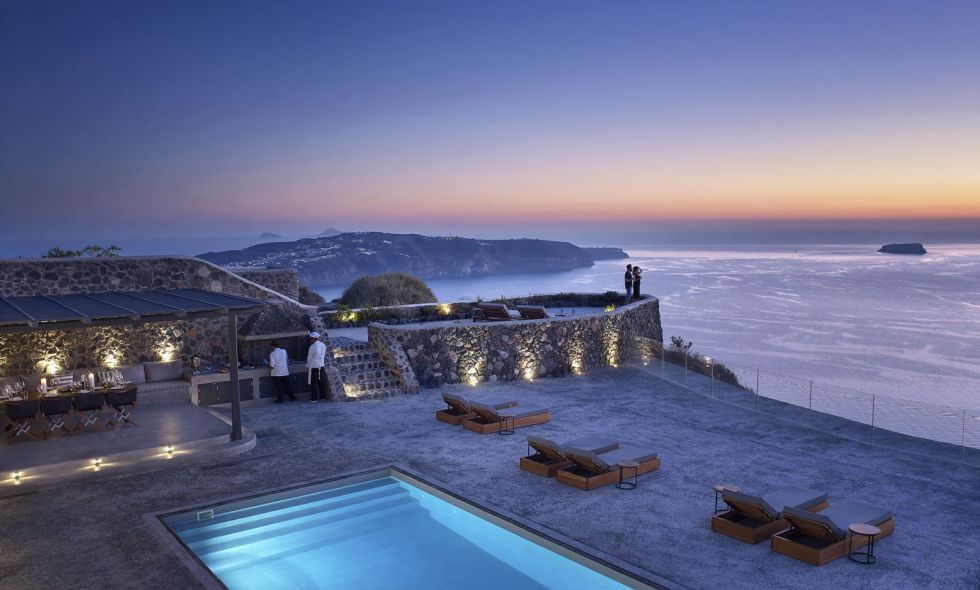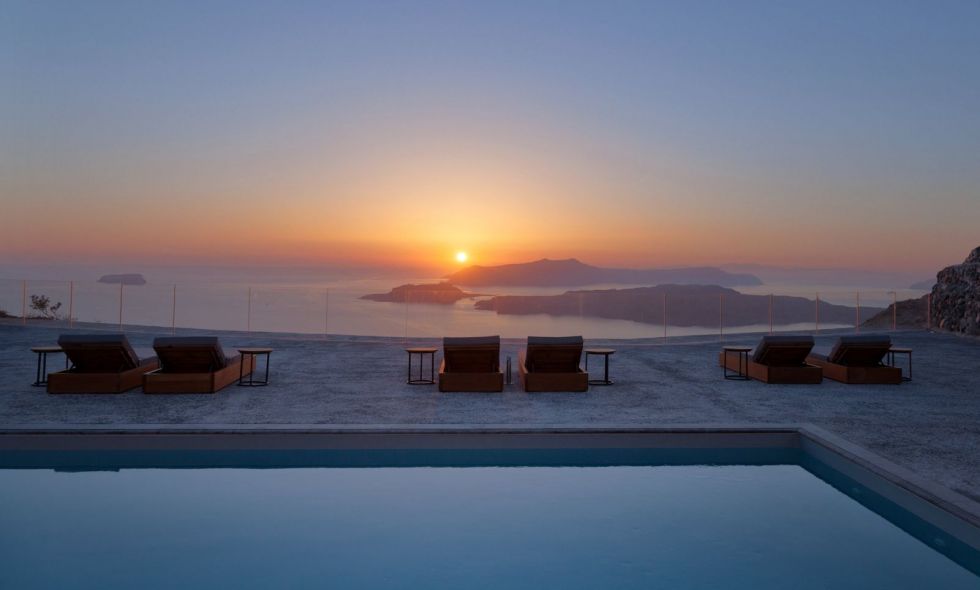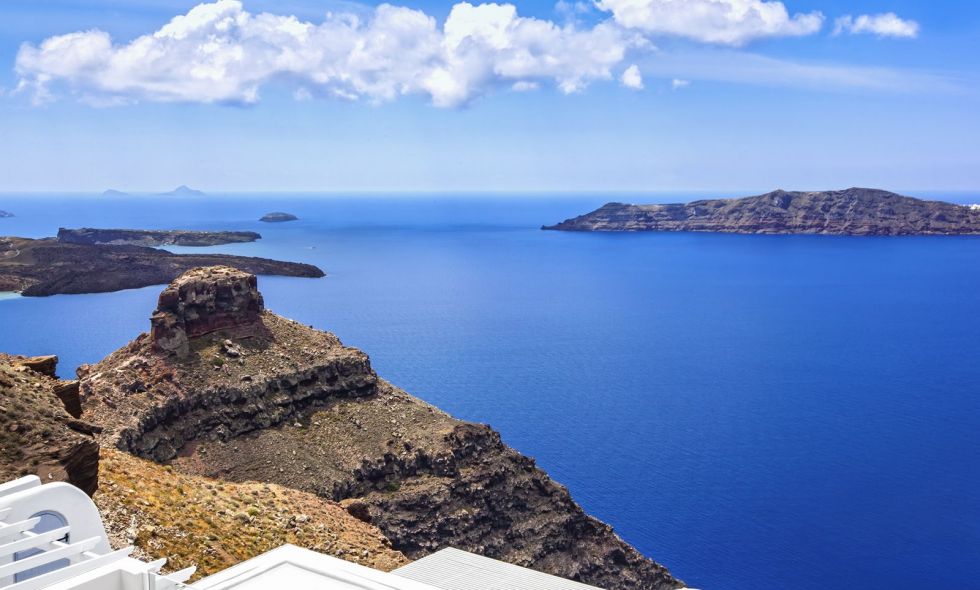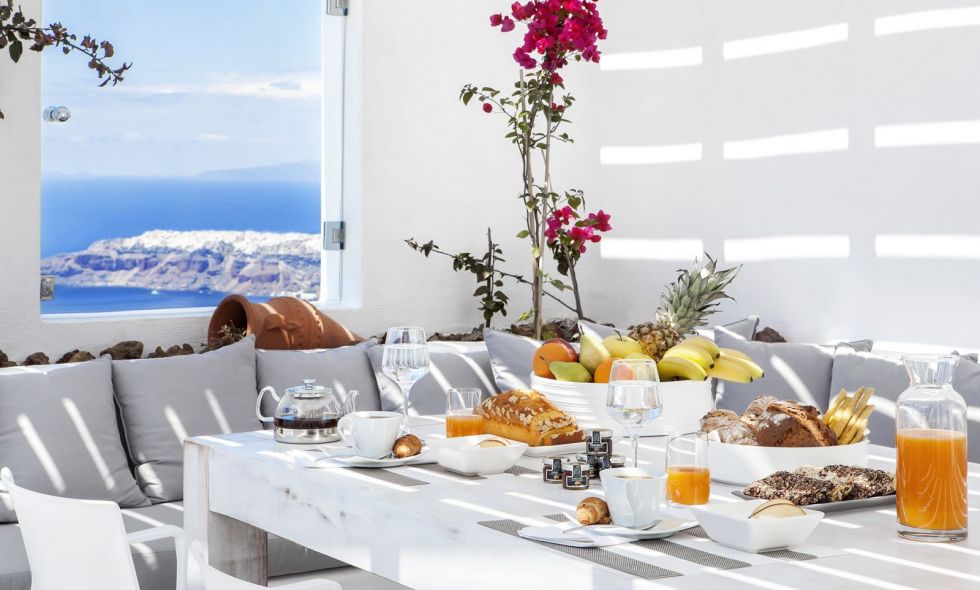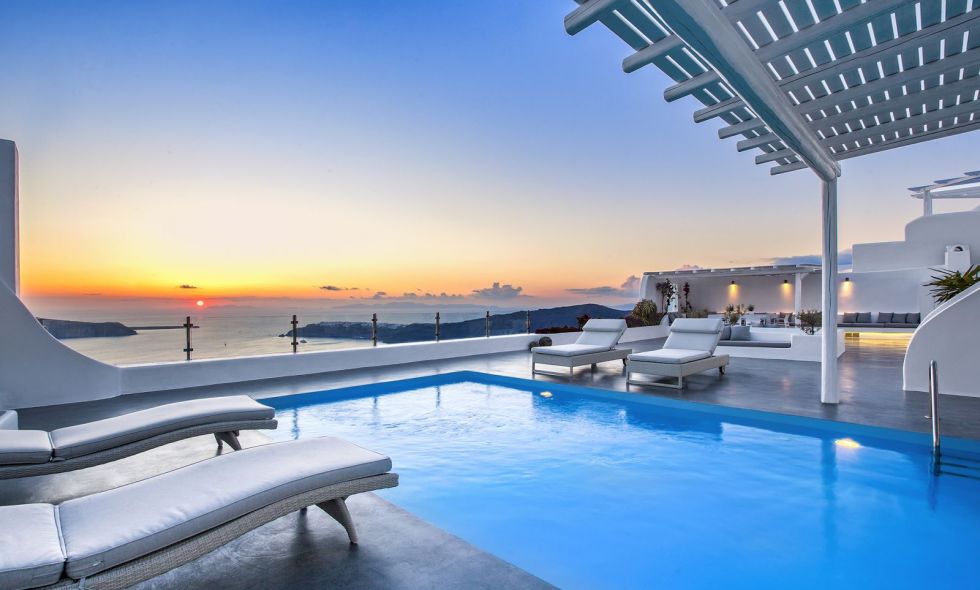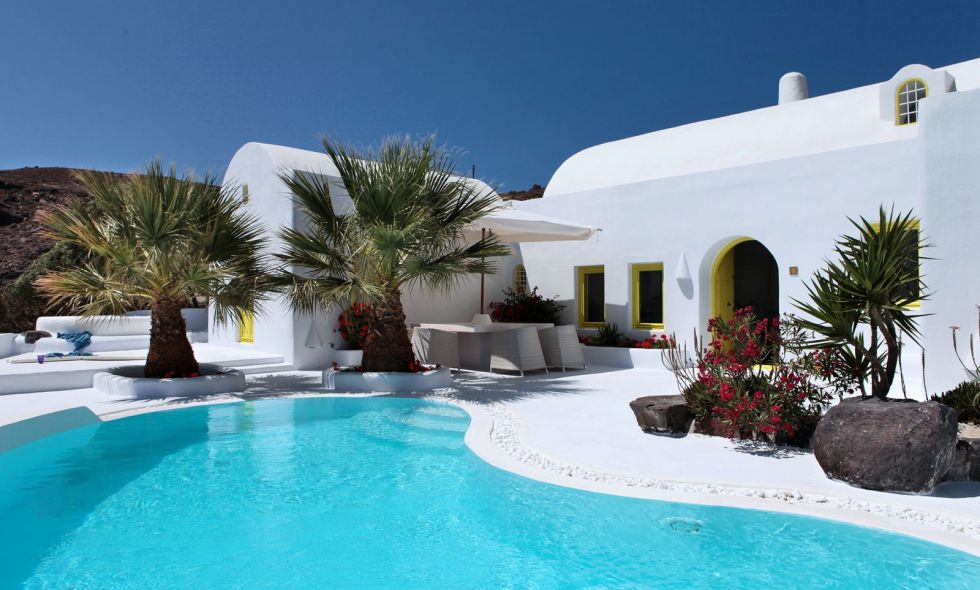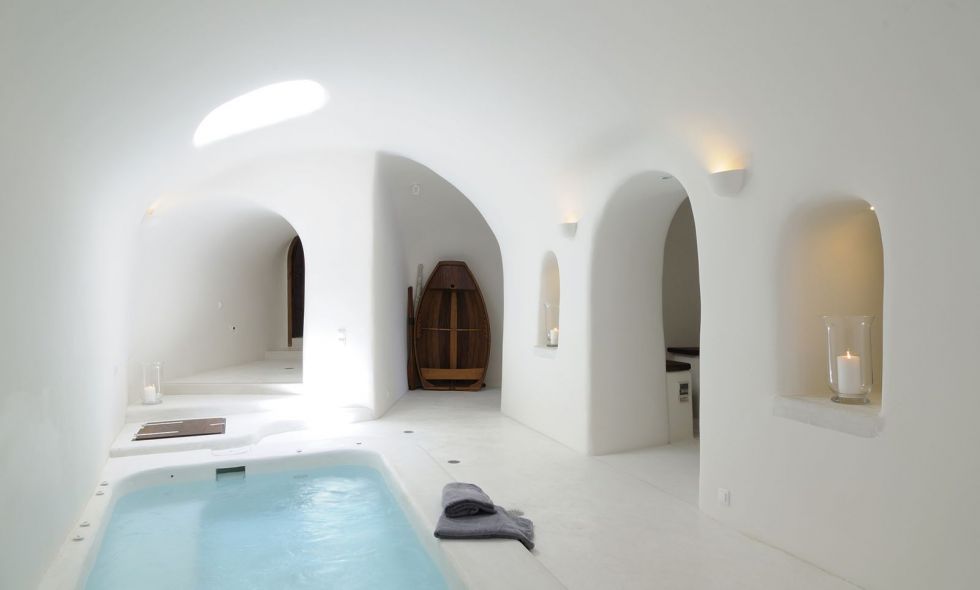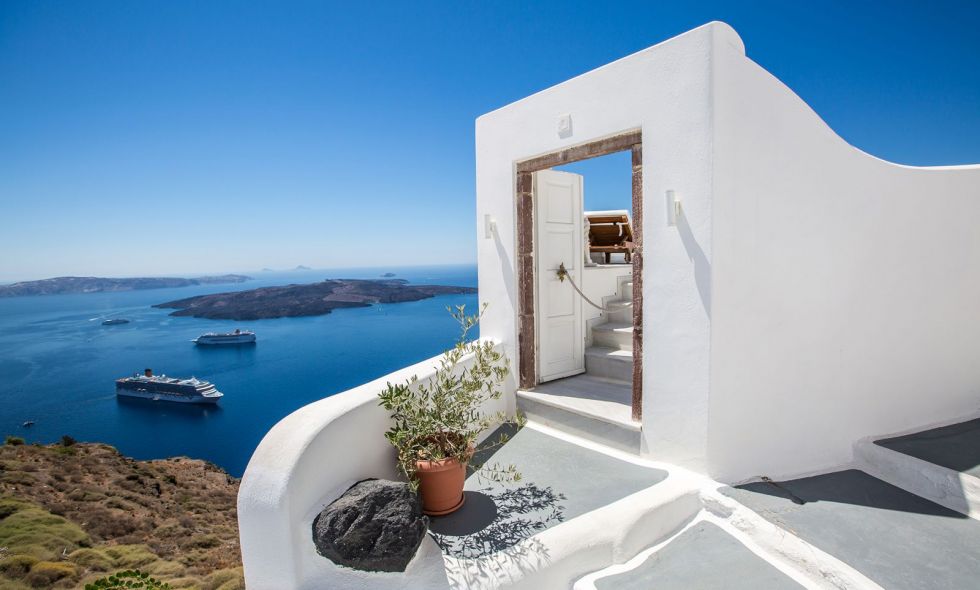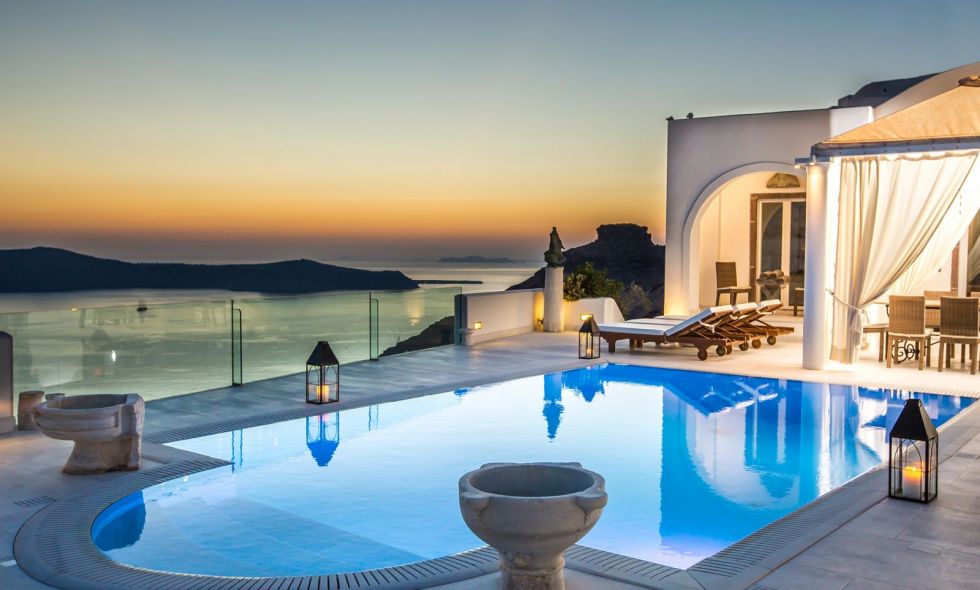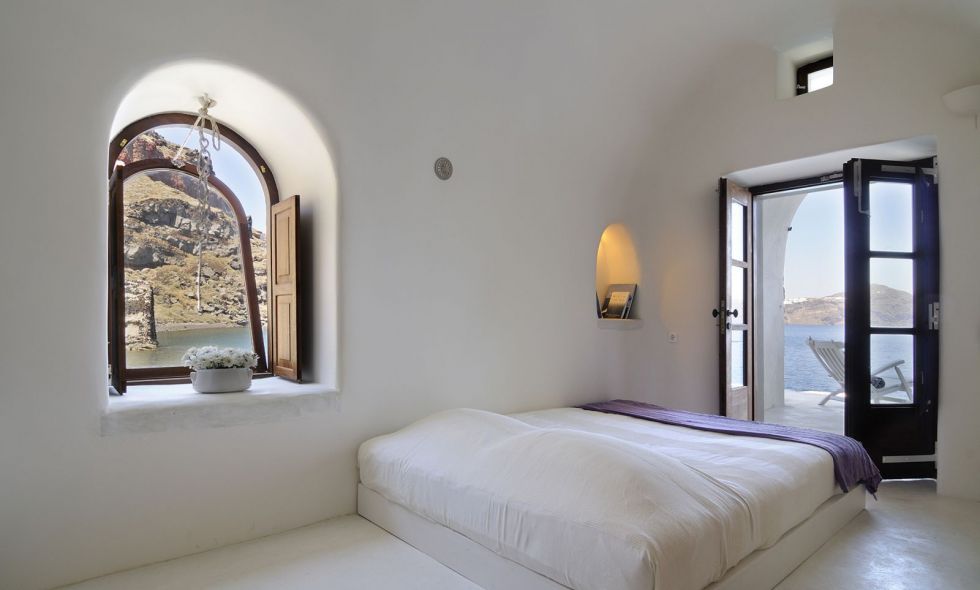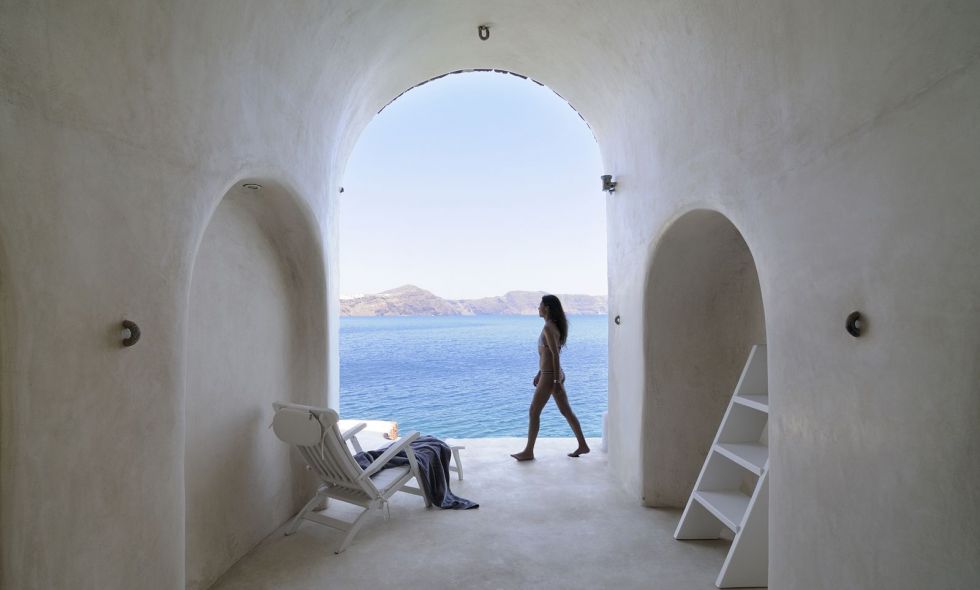Santorini, like Mykonos, needs no introduction, but away from the crater cruises, the sunset views and the honeymoon suites lie sunrise views, black beaches, amazing food and some traditional villages. If you have never been before, arrive by boat just for the sight of those incredible cliffs with their white crusting of village running along the crest, and the dizzying road up from the port.
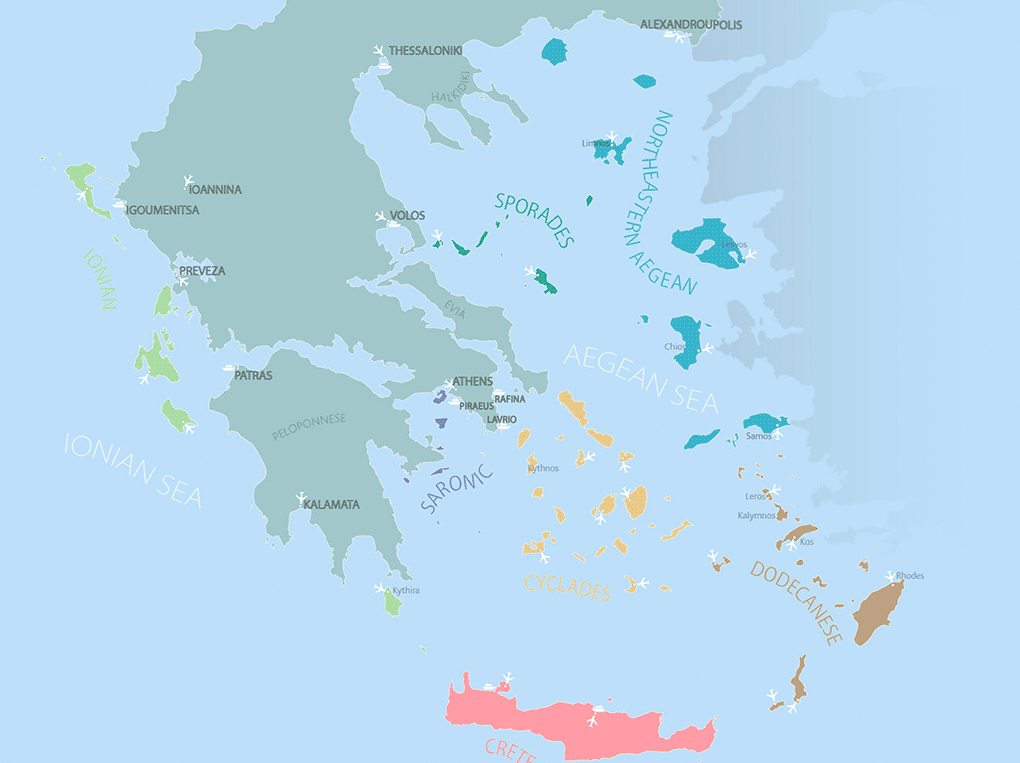
View Map
Santorini Portrait
BEST PLACES TO STAY IN SANTORINI
No inhabitants or livestock were found, meaning that there had been a warning to evacuate –but to where? What do remain are wall paintings, giving a brilliant impression of what life was like.
Gazelle-like women gather saffron, blue-faced monkeys play, and ships are rowed through seas filled with marine life. (The original frescoes are in the National Archaeological Museum in Athens, though you may see some in the museum of Prehistoric Thera in Fira, and impressive replicas in the barrel-like vaults of the Petros Nomikos Centre in Firostefani.) Excavations at Akrotiri are still ongoing.
Santorini has long been touted as the location of the lost city of Atlantis, and fascinates those with a passion for history, dramaand legend.
BEST FOR
Cruising around the submerged caldera. Fabulous dining and high-end restaurants; the local capers, cherry tomatoes, white aubergines and fava are packed with flavour thanks to the island’s volcanic terrain. Amazing indigenous wines that you can enjoy in award-winning wineries. Spectacular ruins at ancient Akrotiri and Thera. Plenty of activities for the sporty, the adventurous, and the restless.
WORST FOR
The noise of motorscooters and loud music is not to be underestimated. Space and privacy are at a premium and very hard to find. High season traffic jams of belching buses bringing in daytrippers from the cruise ships, with the accompanying tourist tat.
Beaches are black pumice, get scorching hot underfoot, shelve steeply into the deep dark sea, and are mostly very crowded.
WOULD SUIT
Photographers, geologists, archaeologists, oenologists, photographers, the young, active and restless, and of course, romantics. Those who want to combine an island stay with day cruising and yacht charters. Families with older children are well catered for with plenty of adventures and activities to be enjoyed.
WOULD NOT SUIT
Those searching for a Greece of remote quietude, better look at villas in Milos or Sifnos. Those with bad knees or hips, or those with small children in pushchairs – Santorini is steep and full of steps. Cars cannot get to most places so you have to be able to walk. The upmarket tourism is clustered along the caldera’s cliffs, so no good for those wanting beachfront villas.
Most hotels do not even accept children, so as not to ruin the honeymoon vibe that is Santorini’s main tourist attraction.
For a more relaxed atmosphere with traditional Cycladic charm, golden beaches, and a vibrant yet low-key scene, take a look at our curated collection of luxury villas in Paros, Antiparos.
THINGS TO DO IN SANTORINI
Many visitors do not get beyond their villa pool, improbably perched on the extremities of the lava crust. But for those who do, there is much to see and do in Santorini.
A sunset cruise in a schooner round the caldera, clambering up the little island of Nea Kameni to see the smouldering crater and plunging into the sulphurous hot springs of Palea Kameni.
Swimming off a black, grey or red beach (hotter than you expect). Water-sports galore at Perissa and Perivolos, long black pebble beaches backed by boutiques, restaurants and cafes; head right for more a chilled and sophisticated scene — Ta Dichtia is a good local taverna, while Seaside Santorini serves great cocktails in a see-and-be-scene setting. In the north, Baxedes and Koloumbos have dramatic black shores where you can escape the hordes.
Tour the old tomato canning factory in Vlychada, followed by a swim on the cliff-backed beach and seaside lunch at pretty, friendly To Psaraki. Walk down the old donkey path from Oia to Ammoudi for a seafood lunch at Katina’s or Dimtris, their colourful tables crowded along the boardwalk.
Hike along the giddying caldera’s edge from Fira to Oia, which takes four to five hours. At Imerovigli, you can walk across a causeway to Skaros, a monolithic former citadel, and down to Theoskepasti, a hidden chapel with amazing caldera views.
An early morning horseback-ride along the beach; there are stables in Megalochori, a relatively authentic village that’s the centre of Santorini’s wine industry. For wine tasting and tours, try Sigalas, Gavalas, Vassaltis Vineyards or Venetsanos wineries.
Or just enjoy a chilled bottle of Assyrtiko white on your terrace at dusk to feel all’s right with you and the world.
HIGH SEASON
If you are looking for quiet village life or a peaceful coastal scene outside the serenity of your villa, don’t even think about Santorini as a destination in July and August.
Giant cruise ships disgorge hordes of daytrippers in coaches all day long, bringing hassle and hustle to the island. Lesser restaurants have their meals imported frozen and service is compromised, though the better restaurants maintain their quality.
LOW SEASON
Santorini has one of the longest tourist seasons in Greece. Many hotels, restaurants and shops stay open from early April until late December.
May/June and September/October are gorgeous for soft light, still warm temperatures, and fewer crowds. Off-season the island is truly magical and worth every amount of purple prose written about it.
We do not show villa details on our site to protect the exclusivity of our owners’ properties. We offer a unique personal service to locate the perfect villa or yacht for you – to see villa details and get our expert guidance and insight please get in touch.
Our Villas in Santorini
Read about our villasAsking for beachfront on Santorini will earn you a gentle smile - no such thing- other than a special hideaway on the opposite island of Thirassia. "Iposkafo" is the Santorini speciality - cool, cave rooms carved into the very sides of the island, beds in the rear and jacuzzi’s in front. A couple of grand villas have pools and a/c and views. Send Us an Enquiry About Our Exclusive Villas in Santorini

